The Battle for Value: Athlon 64 3200+ vs. Pentium 4 530
by Anand Lal Shimpion October 19, 2004 1:04 AM EST
- Posted in
- CPUs
89 Comments
|
89 Comments
IndexModel Numbers Help and ConfuseThe TestBusiness/General Use PerformanceBusiness/General Use Performance ContinuedMultitasking Content Creation PerformanceVideo Creation/Photo Editing PerformanceAudio/Video Encoding PerformanceGaming PerformanceGaming Performance Continued3D Rendering PerformanceWorkstation Application PerformancePower Consumption ComparisonThe Battle for Value: Athlon 64 3200+ vs. Pentium 4 530Justifying a Rating: Athlon 64 4000+ vs. Athlon 64 3800+Re-evaluating the Benefits of Socket-939Final Words
The Battle for Value: Athlon 64 3200+ vs. Pentium 4 530
In a review of processors selling for close to $1,000, it’s important
to look at some of the more affordable CPUs to see how they stack up against
each other as well. With the introduction of the first 90nm Athlon 64 parts,
AMD has been able to bring the Socket-939 Athlon 64 CPUs down below $300, making
for an interesting value comparison.
Using our RealTime Pricing Engine we found that for just over
$200 you could either have an Athlon 64 3200+ or a Pentium 4 530 (3GHz). While
this
doesn’t take into account motherboard cost, 925X boards and Socket-939 boards
are in the same general price ranges. You can get a Socket-939 nForce3 board
for $133, and you can get an ABIT 925X board for $150.
So the question becomes, based on our plethora of benchmarks,
which CPU do you buy? In order to find out, we’ll break down the benchmarks
by category once again.
In our Business/General Use tests, the Athlon 64 3200+ won 6
benchmarks, tied in 1 and lost 3. In the 6 benchmarks that the Athlon 64 3200+
won, its average win percentage over the Pentium 4 530 was 17. 6%. In the 3
6%. In the 3
that the Pentium 4 530 won, its average win percentage was also a hefty 9.6%.
Overall it would seem that the Athlon 64 3200+ is the better buy for Business/General
Use, although the Pentium 4 did manage to outperform it in some tests.
In our Multitasking Content Creation tests, the Athlon 64 3200+
won 2 benchmarks and the Pentium 4 530 won 3 benchmarks. In the two benchmarks
the 3200+ won, it outperformed the 530 on average by 12.8%. In the three benchmarks
the 530 won, it outperformed the 3200+ by 10.2%. Although the Athlon 64 won
fewer benchmarks here it won by a larger overall percentage so we’ll call
this one a draw.
Next up is Video Creation/Editing and Photoshop performance,
where the 3200+ won 2 out of the three tests by outperforming the 520 by 22.8%
on average. The Pentium 4 won one test by a margin of 2.5%. The clear winner
here is AMD.
Audio/Video encoding gave the Athlon 64 two wins at an average
of 11. 9%, while the Pentium 4 530 had 3 wins at an average of 11.3%. Given
9%, while the Pentium 4 530 had 3 wins at an average of 11.3%. Given
the virtually equal performance wins with a slight difference in the number
of wins, we’ll call this one a slight victory for Intel.
If you’re a gamer, the choice is clear, the Athlon 64 3200+ won
10 out of 10 gaming benchmarks with an average performance advantage of 13.9%
over the Pentium 4 530.
In our 3dsmax 3D rendering tests, the Athlon 64 won twice while
the Pentium 4 one once. However the one test the Pentium 4 won in was actually
a composite of 4 separate 3dsmax tests which we also included in our results.
The Athlon 64 advantage in its two wins was 7.7%, while the Pentium 4 advantage
in its wins was an average of 7%. With 4 actual victories over AMD’s 2, our
recommendation here would be leaning more strongly towards Intel but the win
is definitely not clear cut.
Finally in our workstation tests, the Athlon 64 won 7 benchmarks,
the Pentium 4 won one by 1% and failed one.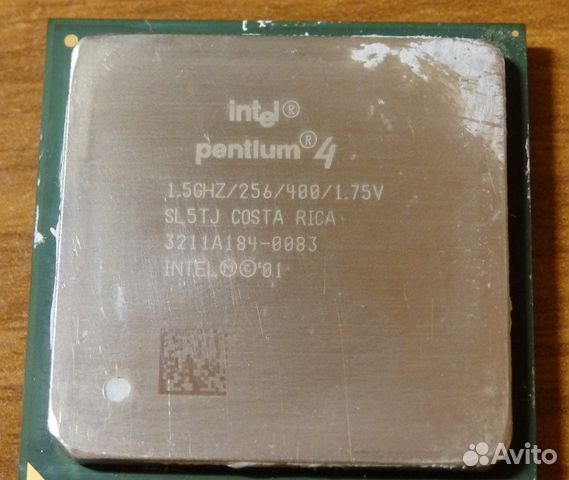 The performance advantage here
The performance advantage here
was an average of 8.4%, giving the advantage to AMD.
In the end, here’s our scorecard for the Athlon 64 3200+ vs.
Pentium 4 530:
Business/General Use — Athlon 64 3200+
Multitasking Content Creation — Tie
Video Creation/Editing and Photoshop — Athlon 64 3200+
Audio/Video Encoding — Pentium 4 530
Gaming — Athlon 64 3200+
3D Rendering with 3dsmax — Pentium 4 530
Workstation Performance — Athlon 64 3200+
Depending on your usage our recommendation may vary, but the
best overall performer at the $200 price point appears to be the Athlon 64
3200+.
Power Consumption Comparison
Justifying a Rating: Athlon 64 4000+ vs. Athlon 64 3800+
IndexModel Numbers Help and ConfuseThe TestBusiness/General Use PerformanceBusiness/General Use Performance ContinuedMultitasking Content Creation PerformanceVideo Creation/Photo Editing PerformanceAudio/Video Encoding PerformanceGaming PerformanceGaming Performance Continued3D Rendering PerformanceWorkstation Application PerformancePower Consumption ComparisonThe Battle for Value: Athlon 64 3200+ vs. Pentium 4 530Justifying a Rating: Athlon 64 4000+ vs. Athlon 64 3800+Re-evaluating the Benefits of Socket-939Final Words
Pentium 4 530Justifying a Rating: Athlon 64 4000+ vs. Athlon 64 3800+Re-evaluating the Benefits of Socket-939Final Words
Tweet
PRINT THIS ARTICLE
AMD Athlon 64 X2 5000+ EE vs Intel Pentium 4 HT 530
Comparative analysis of AMD Athlon 64 X2 5000+ EE and Intel Pentium 4 HT 530 processors for all known characteristics in the following categories: Essentials, Performance, Compatibility, Memory.
AMD Athlon 64 X2 5000+ EE
Buy on Amazon
vs
Intel Pentium 4 HT 530
Buy on Amazon
Differences
Reasons to consider the AMD Athlon 64 X2 5000+ EE
- CPU is newer: launch date 2 year(s) 3 month(s) later
- 1 more cores, run more applications at once: 2 vs 1
- 8x more L1 cache, more data can be stored in the L1 cache for quick access later
- Around 29% lower typical power consumption: 65 Watt vs 84 Watt
| Launch date | September 2006 vs June 2004 |
| Number of cores | 2 vs 1 |
| L1 cache | 128 KB vs 16 KB |
| Thermal Design Power (TDP) | 65 Watt vs 84 Watt |
Reasons to consider the Intel Pentium 4 HT 530
- Around 15% higher clock speed: 3 GHz vs 2.
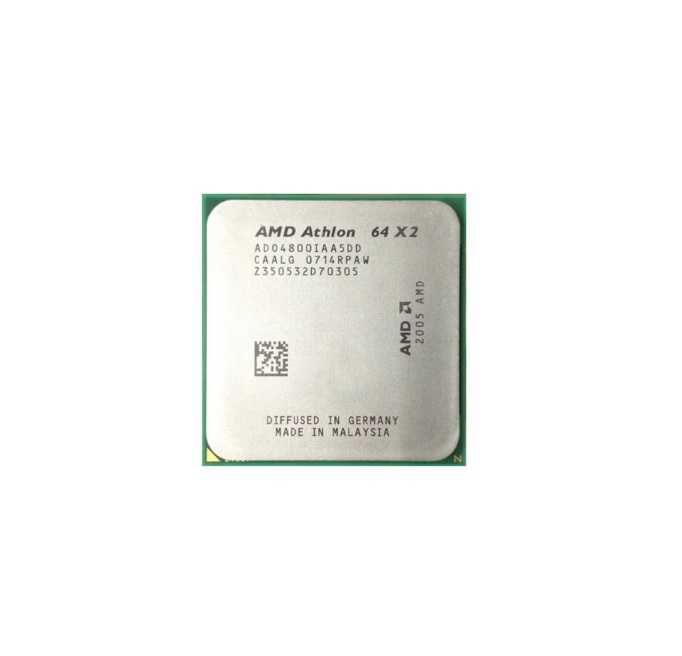 6 GHz
6 GHz - 2x more L2 cache, more data can be stored in the L2 cache for quick access later
| Maximum frequency | 3 GHz vs 2.6 GHz |
| L2 cache | 1024 KB vs 512 KB |
Compare specifications (specs)
| AMD Athlon 64 X2 5000+ EE | Intel Pentium 4 HT 530 | |
|---|---|---|
| Architecture codename | Windsor | Prescott |
| Launch date | September 2006 | June 2004 |
| Place in performance rating | not rated | not rated |
| Vertical segment | Desktop | Desktop |
| 64 bit support | ||
| Die size | 220 mm | 109 mm |
| L1 cache | 128 KB | 16 KB |
| L2 cache | 512 KB | 1024 KB |
| Manufacturing process technology | 90 nm | 90 nm |
| Maximum frequency | 2.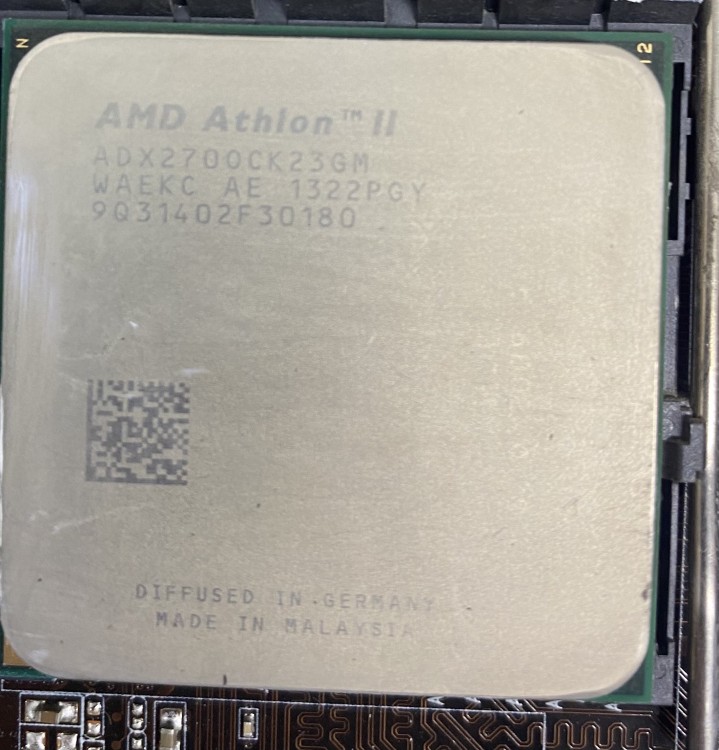 6 GHz 6 GHz |
3 GHz |
| Number of cores | 2 | 1 |
| Transistor count | 154 million | 125 million |
| Max number of CPUs in a configuration | 1 | 1 |
| Sockets supported | AM2 | 775 |
| Thermal Design Power (TDP) | 65 Watt | 84 Watt |
| Supported memory types | DDR1, DDR2, DDR3 |
Navigation
Choose a CPU
Compare processors
Compare AMD Athlon 64 X2 5000+ EE with others
AMD
Athlon 64 X2 5000+ EE
vs
Intel
Core Duo LV L2500
AMD
Athlon 64 X2 5000+ EE
vs
AMD
Athlon 64 X2 5200+ EE
AMD
Athlon 64 X2 5000+ EE
vs
AMD
Athlon 64 X2 5200+
Intel Pentium 4 vs AMD Athlon 64 X2 4800+
|
|
|
|
|
Intel Pentium 4 vs AMD Athlon 64 X2 4800+
Compare the technical characteristics between the group of processors Intel Pentium 4 and the processor AMD Athlon 64 X2 4800+, but also with the respective performance in the benchmarks.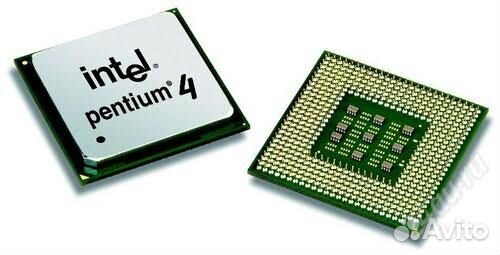
Note: Commissions may be earned from the links above.
This page contains references to products from one or more of our advertisers. We may receive compensation when you click on links to those products. For an explanation of our advertising policy, please visit this page.
Specifications:
| Intel Pentium 4 650 | 2005 Q1 | 90 nm | 1 | 2 | 3.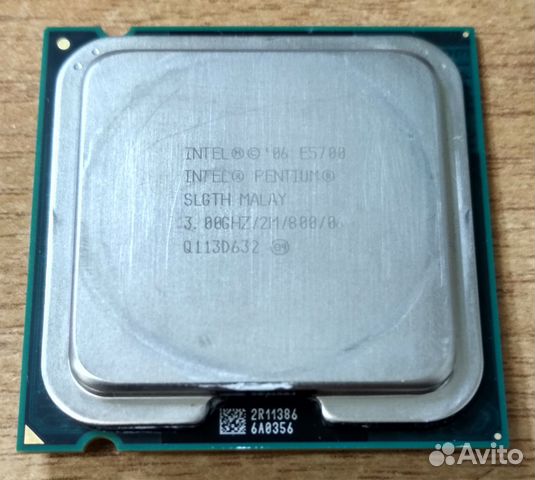 4 4 |
3.4 | 2 | 2 | 16 | 84 | 66.6 | 74 | 136 | 60 | 50 | 677 | 304 | 1045 | 1094 | 254 | 299 | ||||||||
| Intel Pentium 4 631 | 2006 Q1 | 65 nm | 1 | 2 | 3 | 3 | 2 | 2 | 16 | 86 | 64. 1 1 |
69 | 137 | 58 | 48 | 956 | 833 | 989 | 1110 | 154 | 190 | ||||||||
| AMD Athlon 64 X2 4800+ | 2006 Q2 | 65 nm | 2 | 2 | 2.5 | 2.5 | 1 | 8 | 16 | 65 | 68 | 86 | 172 | 55 | 115 | 102 | 213 | 868 | 693 | 1138 | 1833 | 238 | 443 |
Note: Commissions may be earned from the links above.
Price: For technical reasons, we cannot currently display a price less than 24 hours, or a real-time price. This is why we prefer for the moment not to show a price. You should refer to the respective online stores for the latest price, as well as availability.
This comparative table allows us to better appreciate the differences between the various processors. The performance for Geekbench 4 single-core and multi-core are established by default on the Windows operating system, on Linux if there is at least one server processor present in the comparison, on Mac OS X if we make a parallel with at least one Apple branded processor on Linux and Android if a smartphone processor other than Apple is present. Each time, in 64-bit version.
Performances:
| CPU-Z — Multi-thread & single thread score | |
|---|---|
|
AMD Athlon 64 X2 4800+ |
86 172 |
|
Intel Pentium 4 631 |
69 137 |
|
Intel Pentium 4 650 |
74 136 |
Note: Commissions may be earned from the links above. These scores are only an
These scores are only an
average of the performances got with these processors, you may get different results.
CPU-Z is a system information software that provides the name of the processor, its model number, the codename, the cache levels, the package, the process. It can also gives data about the mainboard, the memory. It makes real time measurement, with finally a benchmark for the single thread, as well as for the multi thread.
| Cinebench R15 — Multi-thread & single thread score | |
|---|---|
|
AMD Athlon 64 X2 4800+ |
55 115 |
|
Intel Pentium 4 650 |
60 50 |
|
Intel Pentium 4 631 |
58 48 |
Note: Commissions may be earned from the links above.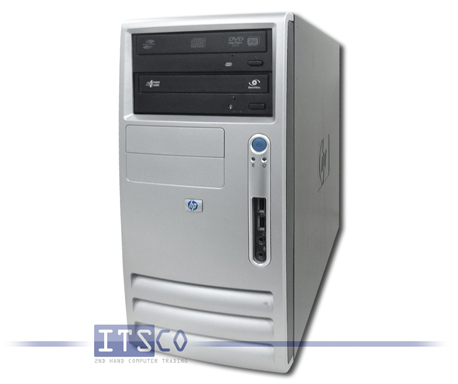 These scores are only an
These scores are only an
average of the performances got with these processors, you may get different results.
Cinebench R15 evaluates the performance of CPU calculations by restoring a photorealistic 3D scene. The scene has 2,000 objects, 300,000 polygons, uses sharp and fuzzy reflections, bright areas, shadows, procedural shaders, antialiasing, and so on. The faster the rendering of the scene is created, the more powerful the PC is, with a high number of points.
| Cinebench R20 — Multi-thread & single thread score | |
|---|---|
|
AMD Athlon 64 X2 4800+ |
102 213 |
Note: Commissions may be earned from the links above. These scores are only an
average of the performances got with these processors, you may get different results.
Cinebench R20 is a multi-platform test software which allows to evaluate the hardware capacities of a device such as a computer, a tablet, a server.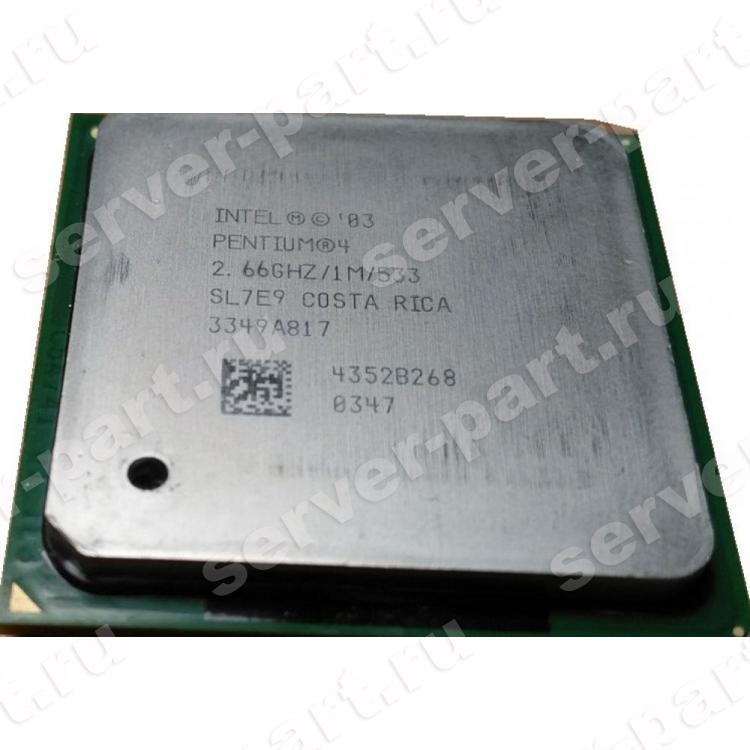 This version of Cinebench takes into account recent developments in processors with multiple cores and the latest improvements in rendering techniques. The evaluation is ultimately even more relevant.
This version of Cinebench takes into account recent developments in processors with multiple cores and the latest improvements in rendering techniques. The evaluation is ultimately even more relevant.
| PassMark — CPU Mark & single thread | |
|---|---|
|
Intel Pentium 4 631 |
956 833 |
|
AMD Athlon 64 X2 4800+ |
868 693 |
|
Intel Pentium 4 650 |
677 304 |
Note: Commissions may be earned from the links above. These scores are only an
average of the performances got with these processors, you may get different results.
PassMark is a benchmarking software that performs several performance tests including prime numbers, integers, floating point, compression, physics, extended instructions, encoding, sorting.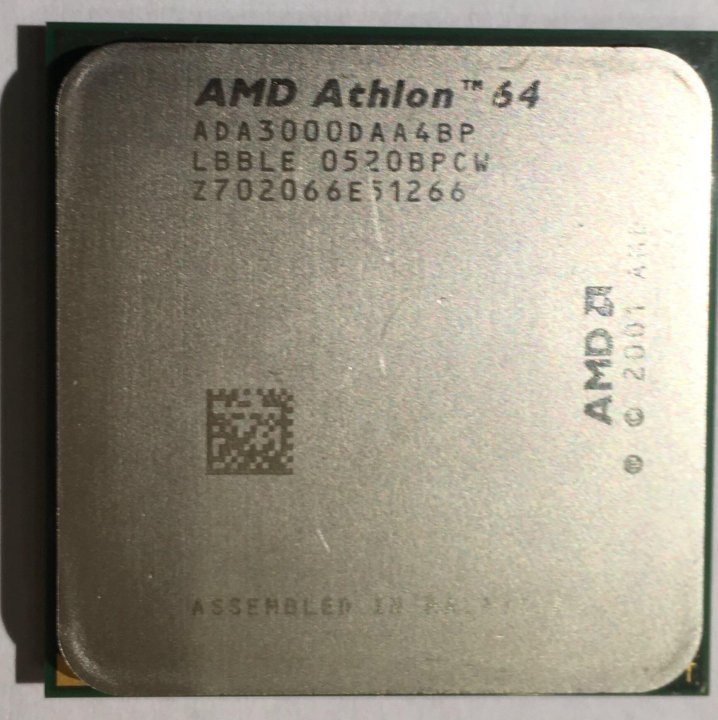 The higher the score is, the higher is the device capacity.
The higher the score is, the higher is the device capacity.
| Geekbench 4 — Multi-core & single core score | |
|---|---|
|
AMD Athlon 64 X2 4800+ |
1.138 1.833 |
|
Intel Pentium 4 631 |
989 1.110 |
|
Intel Pentium 4 650 |
1.045 1.094 |
Note: Commissions may be earned from the links above. These scores are only an
average of the performances got with these processors, you may get different results.
Geekbench 4 is a complete benchmark platform with several types of tests, including data compression, images, AES encryption, SQL encoding, HTML, PDF file rendering, matrix computation, Fast Fourier Transform, 3D object simulation, photo editing, memory testing.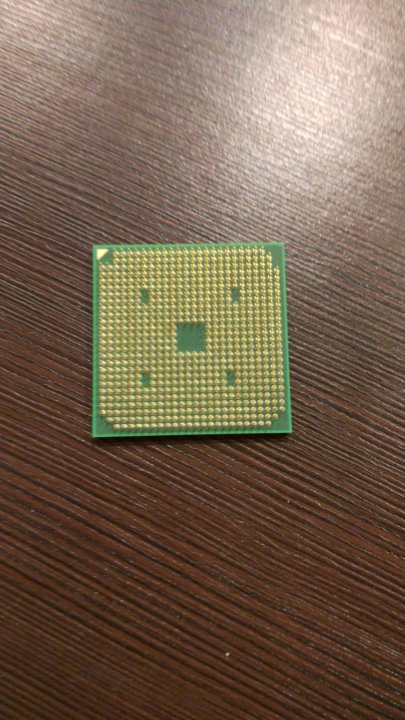 This allows us to better visualize the respective power of these devices. For each result, we took an average of 250 values on the famous benchmark software.
This allows us to better visualize the respective power of these devices. For each result, we took an average of 250 values on the famous benchmark software.
| Geekbench 5 — Multi-core & single core score | |
|---|---|
|
AMD Athlon 64 X2 4800+ |
238 443 |
|
Intel Pentium 4 650 |
254 299 |
|
Intel Pentium 4 631 |
154 190 |
Note: Commissions may be earned from the links above. These scores are only an
average of the performances got with these processors, you may get different results.
Geekbench 5 is a software for measuring the performance of a computer system, for fixed devices, mobile devices, servers. This platform makes it possible to better compare the power of the CPU, the computing power and to compare it with similar or totally different systems. Geekbench 5 includes new workloads that represent work tasks and applications that we can find in reality.
Geekbench 5 includes new workloads that represent work tasks and applications that we can find in reality.
Equivalence:
AMD Athlon 64 X2 4800+ Intel equivalent
See also:
Intel Pentium GoldIntel Pentium IIIntel Pentium IIIIntel Pentium Silver
Benchmarks: Intel’s 64-bit Pentium 4 660
AMD has led the 64-bit desktop processor field up to now with the Athlon 64 — although there is, as yet, no shipping 64-bit Windows operating system, which is necessary to make the most of a 64-bit CPU. However, at the beginning of February Microsoft made Release Candidate 2 of Windows XP Professional x64 Edition available to testers, and the final version is due to ship at the beginning of April.
With its 6xx-series Pentium 4 processors, Intel has finally jumped on the desktop 64-bit bandwagon. Intel’s EM64T architecture can implement Windows’ x86-64 mode, and is also compatible with the AMD64 architecture. This means that you don’t need different Windows operating systems to take advantage of 64-bit processing.
This means that you don’t need different Windows operating systems to take advantage of 64-bit processing.
Intel’s new processors offer some other innovations besides the 64-bit EM64T architecture. For example, all 6xx-series CPUs deliver 2MB of Level 2 cache — double the amount on the 5xx-series chips. There’s also improved power management in the shape of Enhanced Intel Speedstep Technology (EIST) and protection from malware infection via memory overflow thanks to the eXecute Disable (XD) bit.
The 6xx-series Pentium 4 chips have an 800MHz frontside bus (FSB) and are designed for use in standard desktop PCs. Intel is also offering a new Pentium 4 Extreme Edition clocked at 3.73GHz with a 1,066MHz FSB. This expensive ($999), high-end chip is only likely to appeal to a limited market — mainly power users and gamers.
According to Intel, the 6xx-series Pentium 4s will replace the older line in the medium term. However, it may be some months before you can no longer buy 5xx-series chips.
| 6xx-series Pentium 4 processors | ||||
|
|
||||
| Processor | Clock speed |
Level 2 cache | EM64T / XD / EIST |
Price |
|
|
||||
| Pentium 4 660 | 3.6GHz | 2MB | yes / yes / yes | $605 |
| Pentium 4 650 | 3.4GHz | 2MB | yes / yes / yes | $401 |
| Pentium 4 640 | 3.2GHz | 2MB | yes / yes / yes | $273 |
| Pentium 4 630 | 3.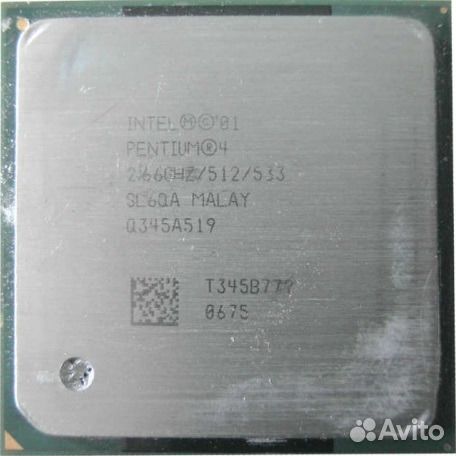 0GHz 0GHz |
2MB | yes / yes / yes | $224 |
|
|
||||
Protection from worms and trojans
The new Intel chips include technology designed to prevent dangerous code — contained in email attachments, for example — being executed via buffer overflows. This is the eXecute Disable (XD) bit, which makes its first appearance on a mainstream Intel desktop CPU: until now, Intel has only implemented the XD bit in the server-class Itanium processor, and a limited number of Pentium 4 variants (those with the suffix ‘J’). The Athlon 64, Athlon 64 FX and Opteron processors also offer this feature, which AMD calls No eXecute (NX).
Windows XP has supported the XD/NX feature since Service Pack 2 (Microsoft calls it ‘Data Execution Prevention’, or DEP). With DEP, the operating system provides a measure of inbuilt protection from worms and trojans, reducing the need to constantly install new security patches.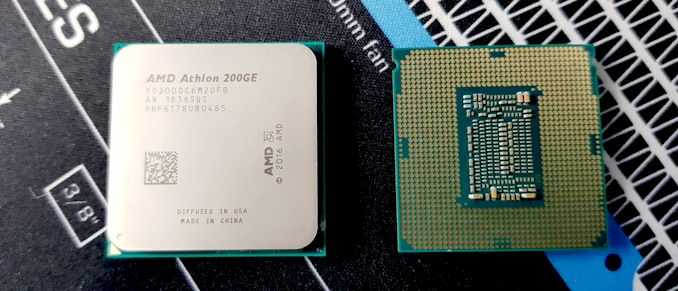 Microsoft estimates that memory overflows lead to 50 per cent of all virus attacks; systems with XD or NX chips are therefore better protected against such attacks than those lacking this feature.
Microsoft estimates that memory overflows lead to 50 per cent of all virus attacks; systems with XD or NX chips are therefore better protected against such attacks than those lacking this feature.
Improved power management
The new 6xx-series Pentium 4 processors benefit from improved power management in the shape of Enhanced Intel Speedstep Technology (EIST). The addition of this feature, along with improvements in the fabrication process, results in lower power consumption.
EIST provides similar functionality to AMD’s Cool ‘n Quiet technology in its Athlon 64 processors. If the system is in Idle mode, the voltage and clock frequency are reduced. As the CPU load increases, the voltage and clock frequency are gradually stepped up. The power consumption figures below demonstrate the effect of this technology. The Pentium 4 560 system without EIST (Intel D925XCV motherboard, 2 x 512MB Micron DDR2 RAM, MSI GeForce 6600GT, Maxtor Maxline III 250GB) uses 153 Watts in Idle mode, and this is reduced by 40 Watts when the EIST-equipped Pentium 4 660 is used instead.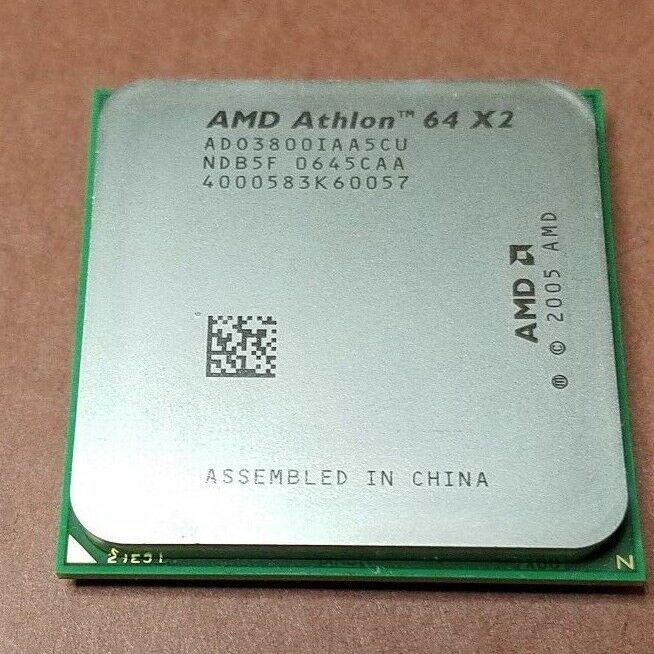 That’s all the more impressive when you consider that Intel’s new chip contains more transistors thanks to its 2MB of Level 2 cache. Compared to AMD’s Athlon 64 4000+ (Asus A8N-SLI Deluxe), the Pentium 4 600 has closed the power consumption gap significantly, and is now only ten per cent behind.
That’s all the more impressive when you consider that Intel’s new chip contains more transistors thanks to its 2MB of Level 2 cache. Compared to AMD’s Athlon 64 4000+ (Asus A8N-SLI Deluxe), the Pentium 4 600 has closed the power consumption gap significantly, and is now only ten per cent behind.
| Power consumption: Pentium 4 versus Athlon 64 | |||
|
|
|||
| CPU | Pentium 4 660 (N0-Stepping) |
Athlon 64 4000+ | Pentium 4 560 (D0-Stepping) |
|
|
|||
| Maximum* | 230W | 203W | 267W |
| Minimum | 113W | 103W | 153W |
|
|
|||
* Maximum power consumption is measured using the CPU Stability Test 6.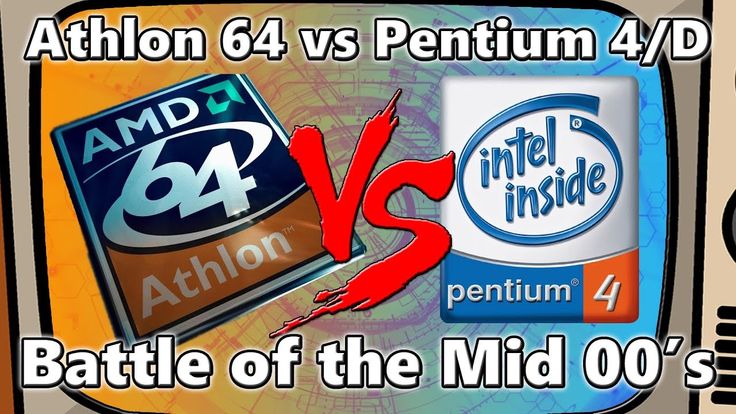 0 utility. If there is additional load on the graphics card, the system’s maximum power consumption will be higher still. Note: the power consumption figures refer to complete systems with otherwise identical specifications.
0 utility. If there is additional load on the graphics card, the system’s maximum power consumption will be higher still. Note: the power consumption figures refer to complete systems with otherwise identical specifications.
Test setup
To evaluate the performance of Intel’s top-end 6xx-series Pentium 4 (the 660 model running at 3.6GHz), we have compared it to AMD’s Athlon 64 4000+. Both processors cost just over $600.
The Pentium 4 test system is built around Intel’s 925XCV motherboard, which is equipped with 1GB of 533MHz DDR2 RAM. For the Athlon 64 system, we used the Asus A8N-SLI motherboard, again with 1GB of (DDR400) RAM. The other specifications are identical, comprising the MSI GeForce 6600GT graphics card and Maxtor’s Maxline III 250GB SATA hard drive.
Benchmarking is based primarily around current programs that might be used in a typical digital home PC. Available 64-bit applications are also used to test performance. Some tests are run in parallel, in order to evaluate the processors’ multitasking ability.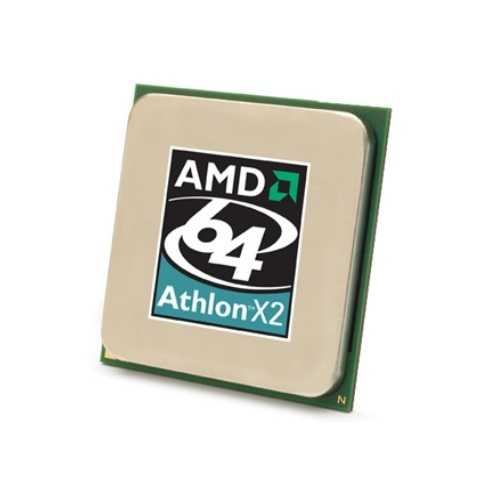 Last year’s top 3D games are also represented in the shape of Doom3, Far Cry and Half Life 2.
Last year’s top 3D games are also represented in the shape of Doom3, Far Cry and Half Life 2.
Most tests were carried out under Windows XP Professional x64 Edition RC2 (Build 1433). However, the production of an HTML picture gallery with Jalbum was done under 32-bit Windows: this application requires a Java Virtual Machine, which is not yet available for the 64-bit platform. We contacted numerous vendors about 64-bit Windows applications, with limited success. We do have some 64-bit applications in this performance test, but most are still beta versions.
| Benchmark overview | |||
|
|
|||
| Application | Description |
||
|
|
|||
Povray 3. 6 (32- & 64-bit) 6 (32- & 64-bit) |
raytracing | ||
| Panorama Factory (32- & 64-bit) | panoramic photo production | ||
| FLAC 1.2 (32-bit), Monkey’s Audio 3.99 (32-bit) | lossless compression/decompression of audio data (APE and FLAC) | ||
| Nero Recode (32-bit) | DVD re-quantising/transcoding | ||
| TMPG Express 3.0 (32-bit) | video compression | ||
| Jalbum 5.1 (32-bit) | HTML picture gallery production | ||
| Blobby Dancer Demo (32- & 64-bit) | 3D demo | ||
| Doom3, Far Cry, Half Life 2 | 3D games | ||
| Media Player 10 | HDTV video (1080i) playback | ||
|
|
|||
Benchmarks: audio data, multitasking
Lossless compression of audio data is mainly of interest to hi-fi enthusiasts, who require the highest quality audio streams.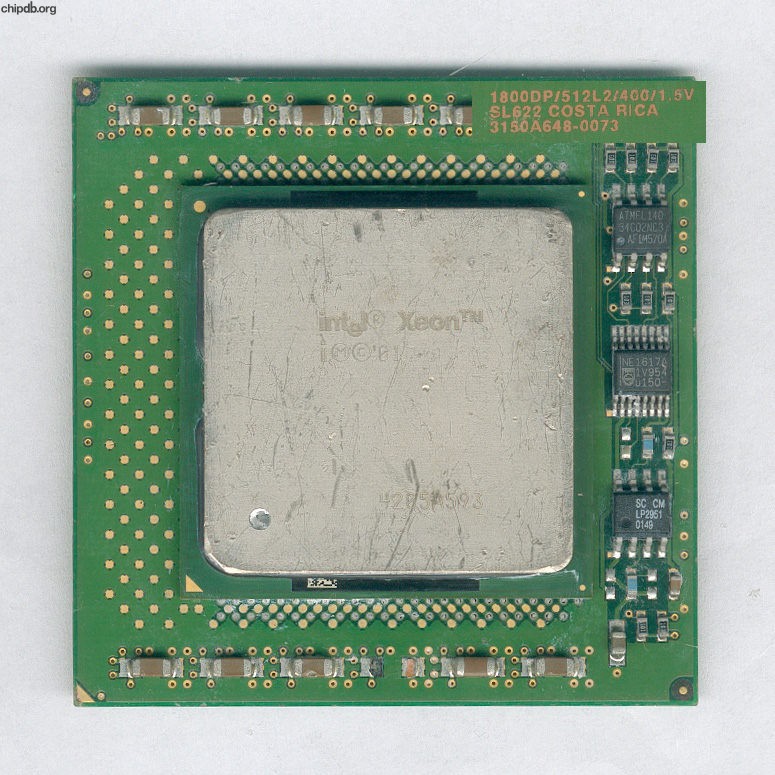 This form of audio compression, which is becoming ever more popular in file sharing networks, can be handled by two programs: Monkey’s Audio and FLAC.
This form of audio compression, which is becoming ever more popular in file sharing networks, can be handled by two programs: Monkey’s Audio and FLAC.
Appropriate plug-ins are available for media players such as Winamp. APE files are provided with Monkey’s Audio 3.99. FLAC files are compressed using the open source FLAC 1.1.1a utility. This program also has some optimisations for the Pentium 4 platform.
For the benchmark test, a compressed audio file (APE: Pink Floyd / Dark Side of the Moon, FLAC: J.S. Bach / Complete Cantatas) is first decompressed and then compressed again.
With Monkey’s Audio 3.99, the Athlon 64 4000+ has the edge, and the picture looks similar with FLAC. However, the Pentium 4 profits from the optimised FLAC version 1.1.2, which is based on the Intel Math Library. This shortens the time for decompressing from 32.8 seconds to 23.2 seconds. When it comes to compression, however, the Athlon 64 takes 32 seconds less than the Pentium 4. In this mode, FLAC obviously has no Intel optimisation.
In this mode, FLAC obviously has no Intel optimisation.
| Monkey’s Audio 3.99 | ||
|
|
||
| Pink Floyd / Dark Side of the Moon | Pentium 4 660 |
Athlon 64 4000+ |
|
|
||
| Decompress (seconds) | 60.1 | 52.8 |
| Compress (seconds) | 47.2 | 42.2 |
|
|
||
| FLAC 1.1.1a | ||
|
|
||
J.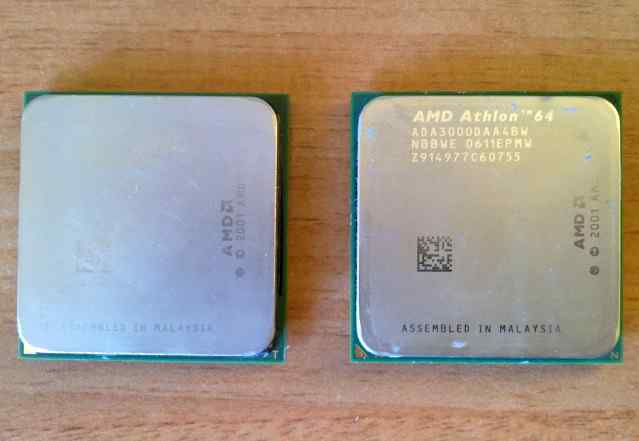 S. Bach / Complete Cantatas S. Bach / Complete Cantatas |
Pentium 4 660 |
Athlon 64 4000+ |
|
|
||
| Decompress (seconds) | 32.8 | 32.1 |
| Compress (seconds) | 143 | 115 |
|
|
||
| FLAC 1.1.2 Optimised (Intel Math Library) | ||
|
|
||
| J. S. Bach / Complete Cantatas | Pentium 4 660 |
Athlon 64 4000+ |
|
|
||
| Decompress (seconds) | 23.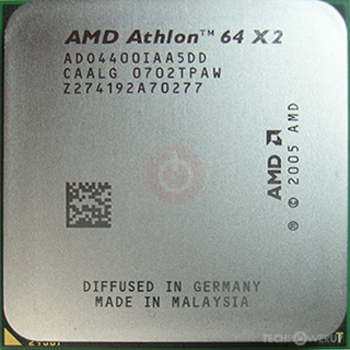 2 2 |
30.9 |
| Compress (seconds) | 143 | 115 |
|
|
||
Multitasking test
When the two audio files are processed separately, the compression results favour the Athlon 64, which takes a total of 157.2 seconds (APE: 42.2s, FLAC: 115s) compared to the Pentium 4’s 190.2 seconds (APE: 47.2s, FLAC: 143s). However, things look different if the compression takes place simultaneously. Then the Pentium 4 benefits from its HyperThreading (HT) functionality and overhauls the Athlon 64. Intel’s chip takes 163 seconds with simultaneous processing compared to 190 seconds with separate processing. For the Athlon 64, the pattern is reversed: 157.2 seconds with separate processing extends to 170 seconds with simultaneous processing.
| Simultaneous compression | ||
|
|
||
| Monkey’s Audio / FLAC | Pentium 4 660 |
Athlon 64 4000+ |
|
|
||
| Monkey’s Audio compression (seconds) | 74 | 99 |
| Total time including FLAC compression (seconds) | 163 | 170 |
|
|
||
Benchmarks: video data
When it comes to video compression, the Pentium 4 660 is ahead of its AMD rival.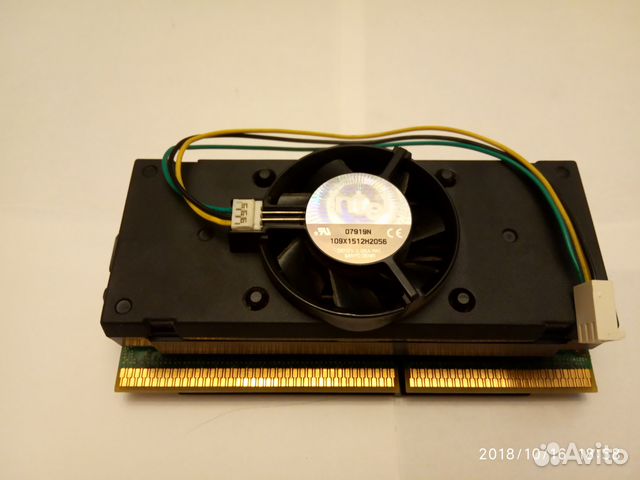 Most applications in this area offer HT support, so the advantage of using the Intel architecture is hardly surprising.
Most applications in this area offer HT support, so the advantage of using the Intel architecture is hardly surprising.
TMPEG Enc Xpress 3.0 supports the Pentium 4’s SSE3 instructions, which have yet to be incorporated into the Athlon 64 (this is slated for the next revision). Compression of the SVCD-format video file is therefore faster with the Pentium 4.
With Nero Recode you can copy a non-copy-protected 8.7GB DVD onto standard 4.7GB DVD-R media. To do this, the DVD data is compressed, a process that takes the Pentium 4 660 15:05 minutes in high-quality mode. The Athlon 64 4000+ takes over 20 minutes to complete the task.
| Video compression | ||
|
|
||
| Video | Pentium 4 660 |
Athlon 64 4000+ |
|
|
||
| Nero Recode (minutes) | 15:05 | 20:12 |
TMPG Xpress 3.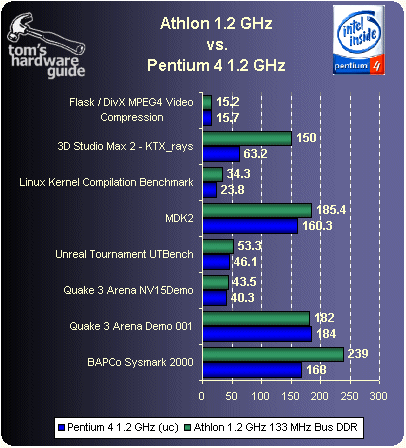 0 (minutes) 0 (minutes) |
03:44 | 04:02 |
|
|
||
Benchmarks: games
In the gaming tests, which were carried out at 1,280 by 1,024 resolution, the Athlon 64 is the better performer overall.
Nvidia’s Blobby Dancer demo, which is available in 64-bit as well as standard 32-bit versions, provides an interesting result. The 64-bit version runs about 20 per cent faster under both processors.
Also interesting are the results from Quake II. This very popular first-person shooter from the 90s has gone open source and is available as a .NET version. There is a beta version of Microsoft .NET Framework 2.0 for Windows XP Professional x64 Edition RC2, which allows this game to be played under the 64-bit OS. The results show two things. First, the Pentium 4 delivers better performance with the .NET version than the Athlon 64 (a similar pattern is observed with the normal version of the game).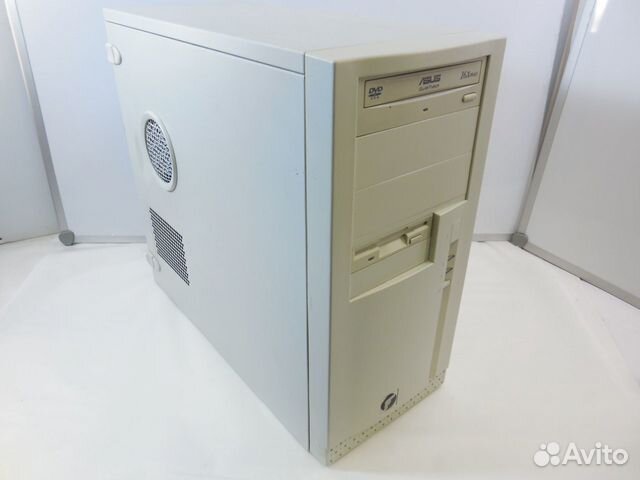 Second, in contrast to the Blobby Dancer demo, Quake II runs slower under the 64-bit OS – so 64-bit programs are not always faster than their 32-bit counterparts.
Second, in contrast to the Blobby Dancer demo, Quake II runs slower under the 64-bit OS – so 64-bit programs are not always faster than their 32-bit counterparts.
| Game tests | ||
|
|
||
| Game | Pentium 4 660 |
Athlon 64 4000+ |
|
|
||
| Far Cry 1.3 (fps) | 43.1 | 44.3 |
| Doom3 (fps) | 60.1 | 62.1 |
| Half Life 2 (fps) | 39.4 | 40.1 |
| Blobby Dancer 64-bit (fps) | 42.4 | 42.3 |
| Blobby Dancer 32-bit (fps) | 34. 8 8 |
35.0 |
| Quake II .NET 64-bit (fps) | 28.6 | 23.1 |
| Quake II .NET 32-bit (fps) | 30.2 | 27.8 |
|
|
||
64-bit benchmarks: photo processing, raytracing
In the final benchmark section we examine 64-bit applications alongside the 32-bit Jalbum 5.1 program. Panorama Factory is a popular tool for producing panoramic photos and, like the open source raytracing program Povray, is available in both 32-bit and 64-bit versions.
To produce an HTML picture gallery with Jalbum, we processed 151 images. As well as applying special effects, the pictures were converted to a different resolution. The Pentium 4 and Athlon 64 took almost exactly the same time to complete this process.
| Photo processing | ||
|
|
||
| HTML picture gallery | Pentium 4 660 |
Athlon 64 4000+ |
|
|
||
Jalbum 5. 1 (151 images) 1 (151 images) |
2:11 min | 2:10 min |
|
|
||
The Povray raytracing test runs 27 percent faster in 64-bit mode on the Athlon 64 than in 32-bit mode. With the Pentium 4, surprisingly, the pattern is the exact opposite: here, the 32-bit version is significantly faster. However, this program still is in the beta stage, and we should be careful not to draw premature conclusions.
| Raytracing | ||
|
|
||
| Povray | Pentium 4 660 |
Athlon 64 4000+ |
|
|
||
| Povray-Benchmark 64-bit (PPS) | 83 | 116 |
| Povray-Benchmark 32-bit (PPS) | 103 | 91 |
|
|
||
The Panorama Factory test demonstrates the advantages of the 64-bit architecture, with both processors showing improvements over the 32-bit version. The Pentium 4 speeds up the panorama production process by around 25 per cent, while the Athlon 64 acceleration is nearly 30 per cent.
The Pentium 4 speeds up the panorama production process by around 25 per cent, while the Athlon 64 acceleration is nearly 30 per cent.
| Photo processing | ||
|
|
||
| Panorama Factory | Pentium 4 660 |
Athlon 64 4000+ |
|
|
||
| Panorama Factory 64-bit (seconds) | 59.5 | 55.2 |
| Panorama Factory 32-bit (seconds) | 80.1 | 78.5 |
|
|
||
Conclusion
With the launch of the Pentium 4 6xx series, Intel now supports 64-bit computing on the desktop.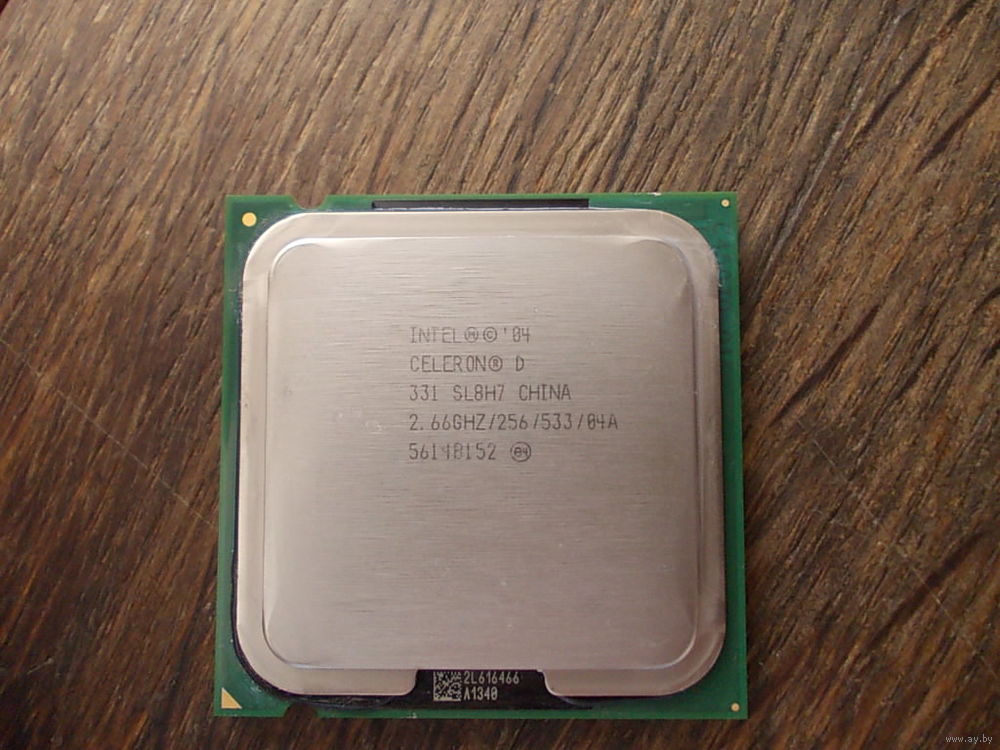 However, this won’t be a huge deal for the majority of users right away. Windows XP Professional x64 Edition will ship within a few weeks, but the lack of key device drivers — for example for digital TV cards — will deter many from upgrading for a while yet. Also, the number of available 64-bit Windows applications can be counted on the fingers of one hand; again, this will not be enough to tempt many upgraders.
However, this won’t be a huge deal for the majority of users right away. Windows XP Professional x64 Edition will ship within a few weeks, but the lack of key device drivers — for example for digital TV cards — will deter many from upgrading for a while yet. Also, the number of available 64-bit Windows applications can be counted on the fingers of one hand; again, this will not be enough to tempt many upgraders.
So it’s just as well that the new Intel processors have more to offer than 64-bit support. Improved power management and protection from memory overflow (via the XD bit) will prove valuable. Enhanced Intel Speedstep Technology (EIST) allows for the dynamic adjustment of voltage and clock speed, which reduces average power consumption significantly. Even when playing a HDTV video, the Pentium 4 660 remains at its lowest clock speed of 2.8GHz, with reduced voltage. As a result, the cooling system can be simpler than it was when the Prescott CPU was introduced over a year ago.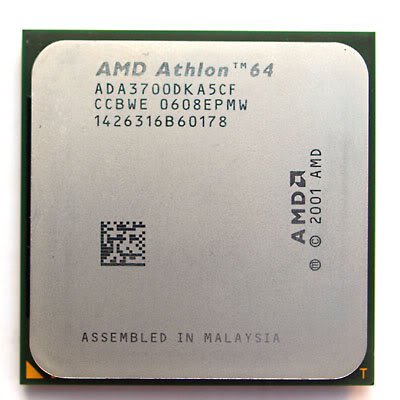 Very quiet systems can now be built around high-performance Pentium 4 processors — a particularly important factor if the PC is to function as the basis for the ‘digital home’ and take its place in the living room.
Very quiet systems can now be built around high-performance Pentium 4 processors — a particularly important factor if the PC is to function as the basis for the ‘digital home’ and take its place in the living room.
Performance
As far as performance is concerned, the 3.6GHz Pentium 4 660 can hold its own against its main competitor, the Athlon 64 4000+. The Intel chip performs particularly well if several tasks are running at the same time; under these circumstances, the Pentium 4 can outpace its AMD rival even if the latter is quicker at performing the tasks on their own. Thanks to HyperThreading (HT), the Pentium 4 distributes processing tasks across two virtual cores, resulting in more efficient utilisation of CPU resources. Such scenarios are found ever more frequently in the real world. For example, no-one should venture onto the Internet without firewall, antivirus and anti-spyware protection. These services are constantly active and need appropriate resources. Likewise, operations such as data encryption or hard disk defragmentation can load the processor, while the user compresses streaming video or audio data. Under such usage patterns, the advantage of HT is particularly apparent.
Likewise, operations such as data encryption or hard disk defragmentation can load the processor, while the user compresses streaming video or audio data. Under such usage patterns, the advantage of HT is particularly apparent.
With the 6xx-series Pentium 4, Intel has ensured that important functionality such as protection from memory overflow, power management and 64-bit support on the desktop is no longer an AMD domain. And with HT support and SSE3 instructions, the new Intel processors offer additional benefits. One change will annoy Intel, however: on the installation CD for Windows XP Professional x64 Edition, the most important operating system files are no longer in the ‘i386’ folder; Intel systems must load the installation files now from the ‘AMD64’ folder. Although that might hurt the industry leader, Intel may draw comfort from the fact that it has already sold more 64-bit chips than the inventor of the x86-64 architecture, AMD.
| Architecture comparison | ||
|
|
||
| CPU | Pentium 4 660 |
Athlon 64 4000+ |
|
|
||
| 64-bit support | yes, EM64T | yes, AMD64 |
| Power management | yes, EIST | yes, Cool ‘n Quiet |
| Memory overflow protection | yes, XD bit | yes, NX bit |
| HyperThreading | yes | no |
| SSE3 | yes | no |
|
|
||
Which is better? AMD Athlon or Intel Pentium 4?
SharkFiNbowL
Posts: 37 +0
-
-
#1
Which is better? AMD Athlon or Intel Pentium 4? I wanna get some ideas and comments from this forum.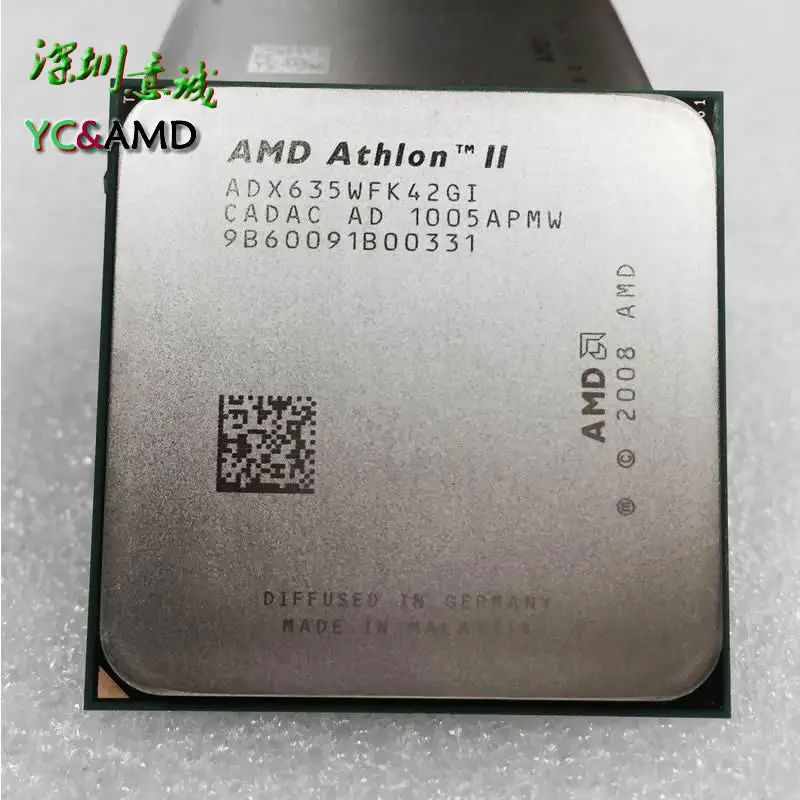 I know that AMD is cheaper than P4, but I know that they’re about the same. What do you guys think? Why? What would you buy (what do you have right now)? … wanna get some comments here.. plz post and reply thx!
I know that AMD is cheaper than P4, but I know that they’re about the same. What do you guys think? Why? What would you buy (what do you have right now)? … wanna get some comments here.. plz post and reply thx!
Rick
Posts: 4,512 +66
-
-
#2
This has been discussed quite a bit.
My personal idea is that the Pentium 4 can make a faster system than an Athlon becuase it reaches such a high clock speed.
But the Athlon does outperform the P4 clock for clock for the most part… It’s just AMD does not really have anything to match a 3. 06GHz P4 with HT in my opinion… Also, the P4 has higher memory speeds, which result in better performance overall.
06GHz P4 with HT in my opinion… Also, the P4 has higher memory speeds, which result in better performance overall.
Athlon XP vs. 2.5GHz P4 or less — AMD wins by a long shot for peformance/price.
Athlon XP vs. 3.06GHz P4 — Intel is the speed king here, but is a bad value. I’d still choose an AMD in this case because of the extraneous pricing of the P4, but those who want the absolute best system — The P4 3.06 is really the fastest CPU out right now.
LNCPapa
Posts: 4,318 +578
-
-
#3
I used to agree with what Rick said — but now that I have had an Athlon XP system for a while I am switching back to Intel.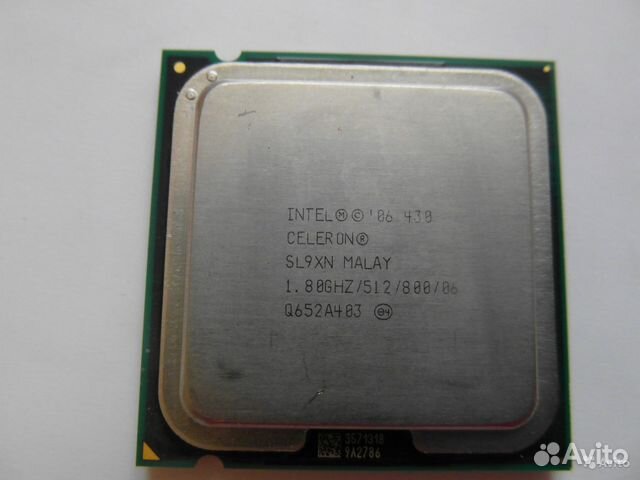 I have never had a problem with an intel machine due to issues with the processor, but I and many of my buddies have with our AMD systems. Lots of heat issues even before any overclocking. I’ve never had heat issues with my intel machines and I have several of them. Also, things just seem to work with Intel systems — not saying that AMD systems aren’t stable, things just seem to be smoother on the Intel machines that I’ve used. My next machine with be an Intel machine, I guarantee that. I just hope that I don’t have to eat these words.
I have never had a problem with an intel machine due to issues with the processor, but I and many of my buddies have with our AMD systems. Lots of heat issues even before any overclocking. I’ve never had heat issues with my intel machines and I have several of them. Also, things just seem to work with Intel systems — not saying that AMD systems aren’t stable, things just seem to be smoother on the Intel machines that I’ve used. My next machine with be an Intel machine, I guarantee that. I just hope that I don’t have to eat these words.
LNCPapa
negroplasty
Posts: 547 +36
-
-
#4
Personally, I don’t think you can compare the two; they both have their pros and cons.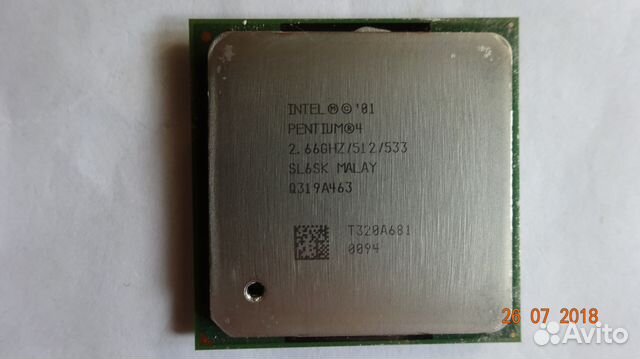 I prefer Intel over AMD for the simple reason that I think more expensive components MUST be better, which I have learned can be wrong sometimes . And the fact that my processor was the best at the time just knocked AMD off my mind. Despite all of this, I could definitely see myself buying AMD products in the future, but for now I think I will stick with Intel.
I prefer Intel over AMD for the simple reason that I think more expensive components MUST be better, which I have learned can be wrong sometimes . And the fact that my processor was the best at the time just knocked AMD off my mind. Despite all of this, I could definitely see myself buying AMD products in the future, but for now I think I will stick with Intel.
Rick
Posts: 4,512 +66
-
-
#5
Originally posted by timmoore
I prefer Intel over AMD for the simple reason that I think more expensive components MUST be better, which I have learned can be wrong sometimes .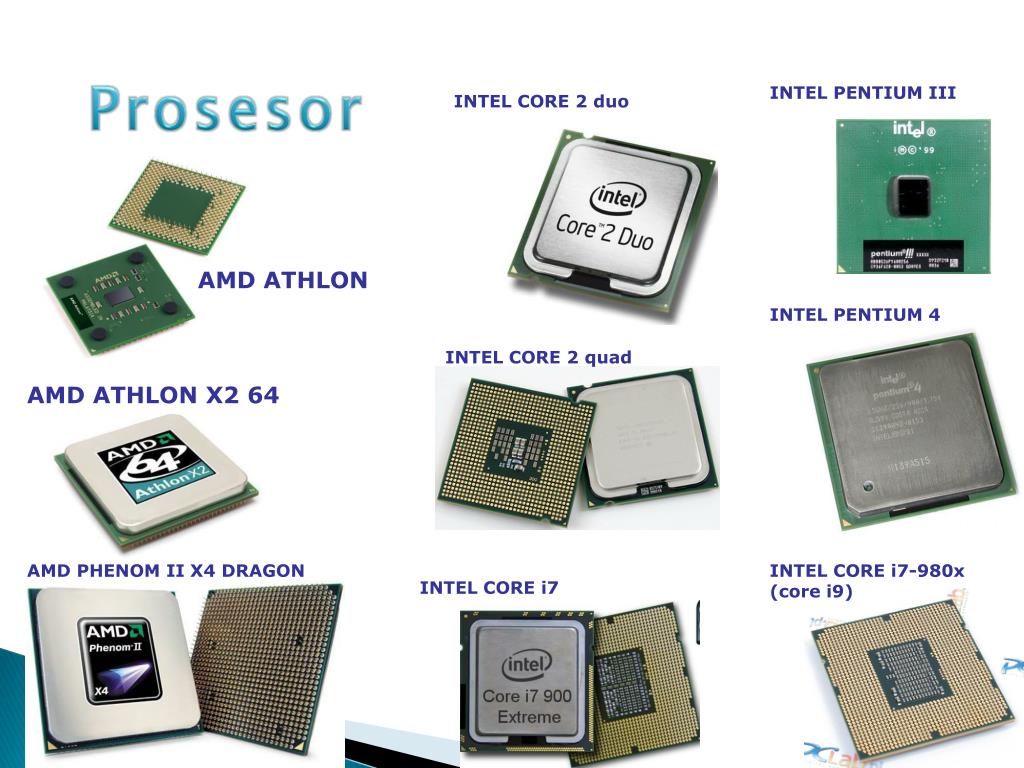
Click to expand…
Yeah, you have to be careful there. There’s plenty of examples of expensive products not living up to their price.. Of course, the opposite can be true as well.
Price isn’t always accurate, but many times you do pay what you get for.
olefarte
Posts: 1,314 +13
-
-
#6
I can’t really compare the two, but I’ve got one of those P 4 3.06’s and it’s great. All I’ve ever had was Intel, PII 300, PIII 600,700, P 4 1.7 and now the P 4 3.06.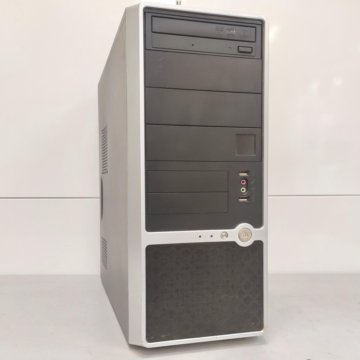 The only problem I have with either one, is they come out to fast with new models. I’d sure like to stay top of the line for a while, but that didn’t last long.
The only problem I have with either one, is they come out to fast with new models. I’d sure like to stay top of the line for a while, but that didn’t last long.
negroplasty
Posts: 547 +36
-
-
#7
Rick,
It is a really stupid way to think and I deserve what I get!! I have made the mistake once, and will undoubtedly make it again; it must be some human instinct that lay dormant in everyone else except me ! The best way for me to go, would be to have both an AMD system and an Intel system, or more expensive and less expensive if you prefer; I only wish I had the money to take this plan into action though :blackeye: !
acidosmosis
Posts: 1,310 +0
-
-
#8
The fact of the matter is.
AMD = cheaper and faster
Intel = more expensive and slower
Buy AMD. That is all you need to know.
Thank’s drive through.
RustyZip
Posts: 322 +0
-
-
#9
I got an Intel, i decided to go that way because a few people were telling me about AMD Heat problems, and after all the fans etc they installed, they can’t hardly hear any sound from the speakers unless they cranked them right up to cover the noise of the fans !!!
Arris
Posts: 4,719 +447
-
-
#10
Funny my 3x2000rpm fans are keeping my £70 2100+ @ 11.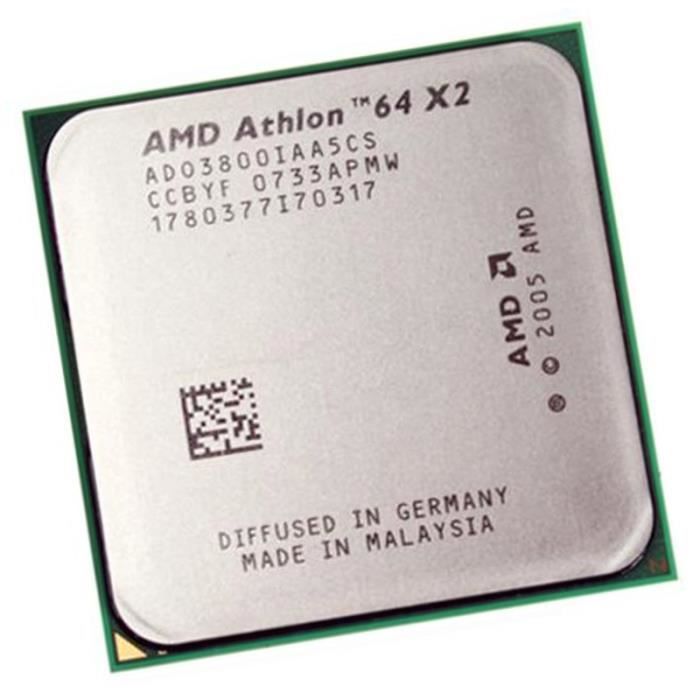 5×200 2.3Ghz and 200fsb (400DDR) @ 55C load. Sandra gives it a PR of ~3400. Which is almost up there with £430 3.06 P4 (without Hyperthreading :S )
5×200 2.3Ghz and 200fsb (400DDR) @ 55C load. Sandra gives it a PR of ~3400. Which is almost up there with £430 3.06 P4 (without Hyperthreading :S )
Just tweaking CPU and Ram voltages for complete stability now.
Nic
Posts: 1,519 +1
-
-
#11
Both Intel AND Amd have had problems in the past.
Personally, I’ve never bought Intel since the days of Pentium III, and I never had any problems with my AMD systems.
Most issues that others have had are usually the result of other system components, as nearly all software is developed on Intel systems, and therefore has been tested on these systems prior to release.
The main reason I buy AMD (apart from lower cost) is that if AMD were not to exist, then the cost of Intel CPUs would not be affordable to the masses, and the pace of technological advancement would be significantly slower. Imagine if we were all still today waiting for Doom 2 to be released so that we could play it on our Pentium 2 systems. Now there something to think about.
AMD needs support and as long as they are making good CPUs at fair prices I see no reason to switch back to Intel (unless Intel falls significantly behind AMD). Really, you will be your own worst enemy if you ignore the benefits of AMD and simply choose Intel in the false belief that you are doing the right thing. Competition is good for consumers, and we all should help keep competition healthy so that we can all benefit from faster, and lower cost, systems.
eddy05
Posts: 147 +0
-
-
#12
I got an AMD just because I want to be different
Of all the friends I knew right now, there are only around 3 AMD users, the rest of them use Intel CPUs.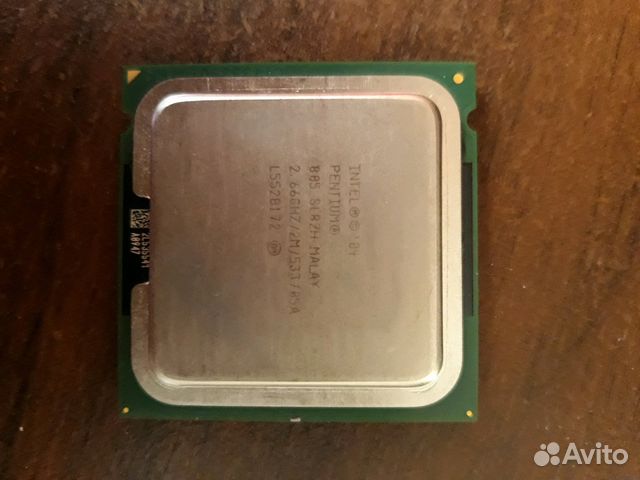 I do not deny the fact that Intel does stringent tests on their CPUs to ensure compatibility, but other than the danger of a failing fan, Athlons worked fine. The only issue I had is using Lancraft, which is also quite buggy anyway.
I do not deny the fact that Intel does stringent tests on their CPUs to ensure compatibility, but other than the danger of a failing fan, Athlons worked fine. The only issue I had is using Lancraft, which is also quite buggy anyway.
One thing I looked into, though, is scalability. While Intel keeps changing their platform, AMD has been using the Socket462 for quite some time now. If anyone had a Duron then when the Socket462 first came out, he still has the option to upgrade to an Athlon XP 3000+ (No Kidding). They are finally moving to the Socket754 which I don’t mind since it’s about time.
I gave up on Intel when I bought my Socket423/i850 combination.
I’m waiting to get my hands on the Athlon 64.
Rick
Posts: 4,512 +66
-
-
#13
Originally posted by eddy05
I gave up on Intel when I bought my Socket423/i850 combination.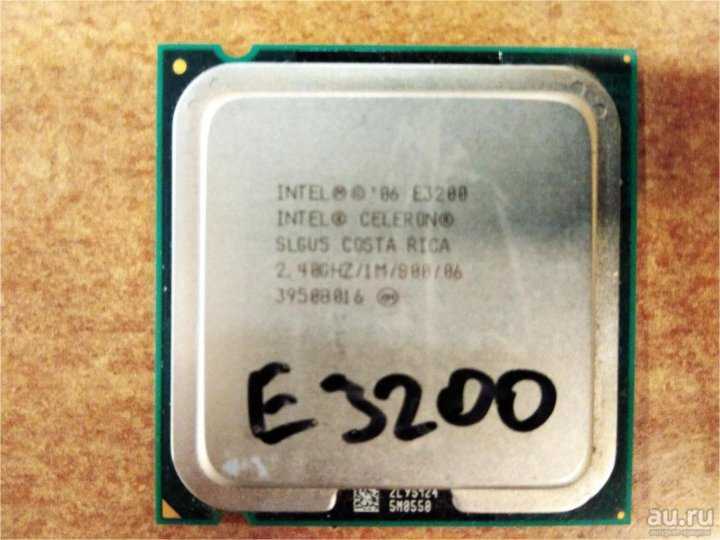
Click to expand…
.. Ouch.
Nic
Posts: 1,519 +1
-
-
#14
Another reason why users shouldn’t buy Intel :dead: …
Intel’s art of gentle AMD persuasion misfires — The Inquirer
agissi
Posts: 1,929 +15
-
-
#15
I go AMD simply over price.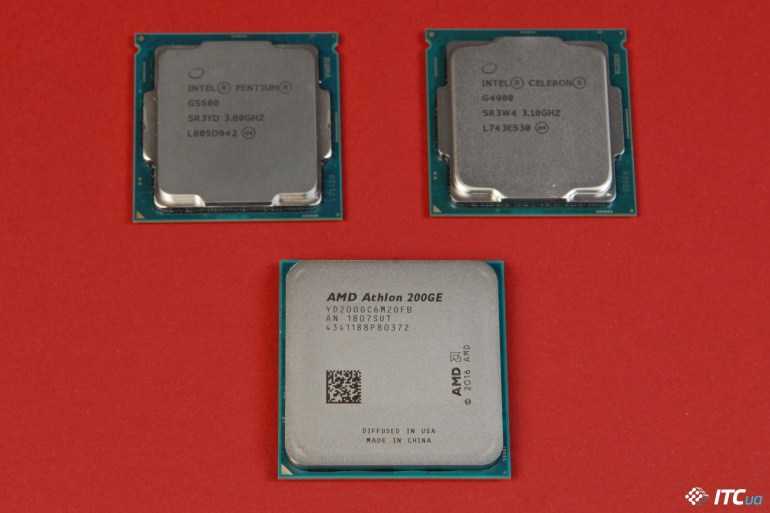 It cost alot more for an Intel CPU thats the same speed as a AthlonXP (Ghz wise, keep in mind the XPs perform ~400mhz faster compared to the P4s).
It cost alot more for an Intel CPU thats the same speed as a AthlonXP (Ghz wise, keep in mind the XPs perform ~400mhz faster compared to the P4s).
—Now just look at that bowl of SharkFiN soup…we’ve come along way my friend
SharkFiNbowL
Posts: 37 +0
-
-
#16
AMD Athlon XP2000+ speed in Pentium 4
I am curious, AMD Athlon XP2000+ says it is 1.67GHz, but some people say that Athlon XP is like whatever Mhz, 400 from agassi’s post, so does AMD Athlon XP2000+ equal to a Pentium 4 1.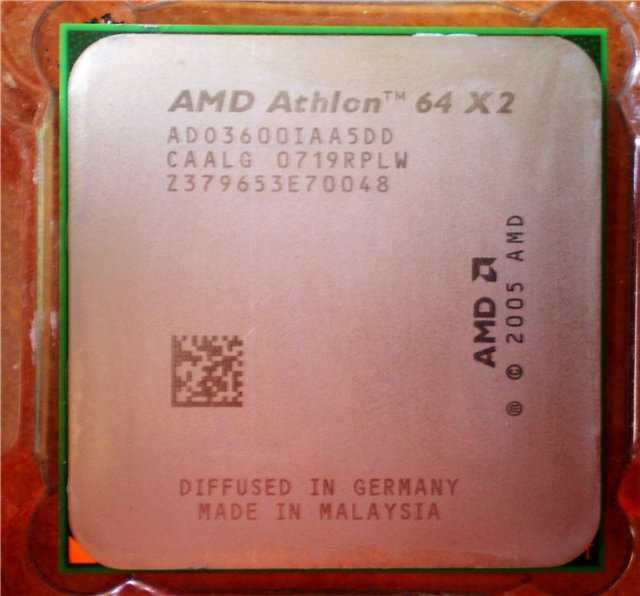 67Ghz or higher?
67Ghz or higher?
By the way, thx! Try the soup, you can probably get it at some expensive chinese restaurants! Watch out, they may be very expensive lol, but very delicious!!
StormBringer
Posts: 2,218 +0
-
-
#17
Ok, here is the official answer Sharky: An Athlon XP 2000+ performs equal or better than a 2GHz P4(that is pretty much AMD’s explanation)
Agissi shouldn’t have used MHz as a measure of performance because it tends to cause confusion. We have discussed the performance differences between the two here before and I see what he meant by the statement but MHz and performance is two different things.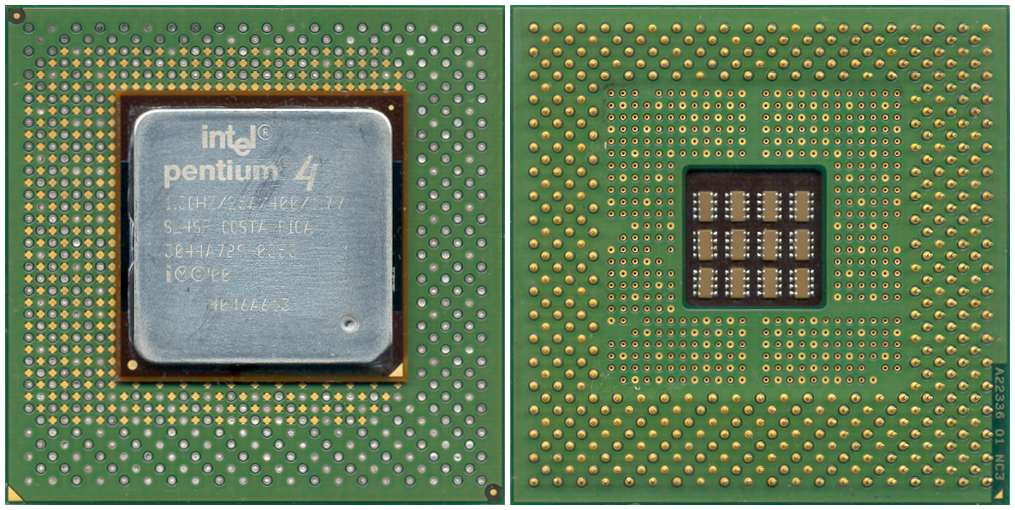 To try and explain this better, if we look at an XP and a P4 of the same clock speed, the AMD outperforms the P4. That is what agissi is saying. Maybe he is saying that a P4 400MHz faster could match that performance. However, the fastest P4 will currently outperform the fastest XP because of several factors as was previously mentioned. The cost is not really worth it IMO though. If you add it all up, including cost, the XP is the best performance, especially for the money IMO.
To try and explain this better, if we look at an XP and a P4 of the same clock speed, the AMD outperforms the P4. That is what agissi is saying. Maybe he is saying that a P4 400MHz faster could match that performance. However, the fastest P4 will currently outperform the fastest XP because of several factors as was previously mentioned. The cost is not really worth it IMO though. If you add it all up, including cost, the XP is the best performance, especially for the money IMO.
cogenmaster
Posts: 117 +0
-
-
#18
AMD for Now
I have been using AMD processors since I dumped my HP computer with a 200mhz mmx intel processor.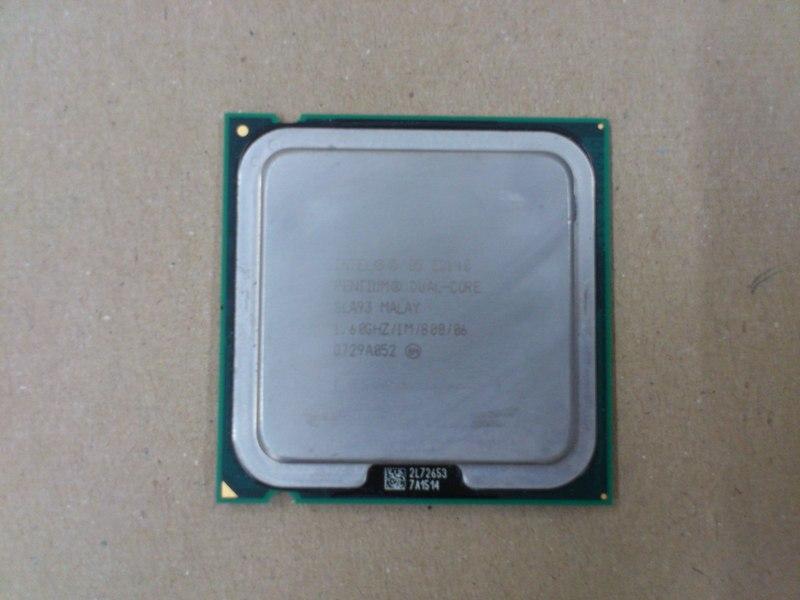 I built an athlon slot A 600 overclocked at 750 for the entire time I owned the processor. It is still running this day overclocked at my brother-in-laws house. I replaced the 600 with a amd xp1700 and soyo mobo. Had a lot of problems with the mobo at first but since getting those issues fixed my machine has run error free for 2 years. I play lots of games and do a lot of web surfing computer is rock stable and never crashes.
I built an athlon slot A 600 overclocked at 750 for the entire time I owned the processor. It is still running this day overclocked at my brother-in-laws house. I replaced the 600 with a amd xp1700 and soyo mobo. Had a lot of problems with the mobo at first but since getting those issues fixed my machine has run error free for 2 years. I play lots of games and do a lot of web surfing computer is rock stable and never crashes.
I do plan the go with Intel on my next system. I can’t stand the damn fan noise with the AMD heat sinks.
spun_1
Posts: 37 +0
-
-
#19
I know its not saying too much,but I believe there’s an article on the front page about Microsoft choosing Athlon over Pentijunk using in house benchmarks.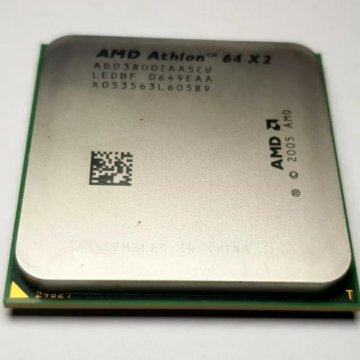 oops I mean Pentium.
oops I mean Pentium.
acidosmosis
Posts: 1,310 +0
-
-
#20
Not to say that Pentiums are all that bad because they aren’t, but the point is there is no logic in buying Pentiums over Athlon other than the fact that you need a better cooling solution. BUT the fact is even with a more than efficient heatsing+fan your Athlon processor is going to cost you less than the Pentium equivelant. Athlon processors are higher end processors that run much faster than Pentiums, cost less, and are more «effecient» processors.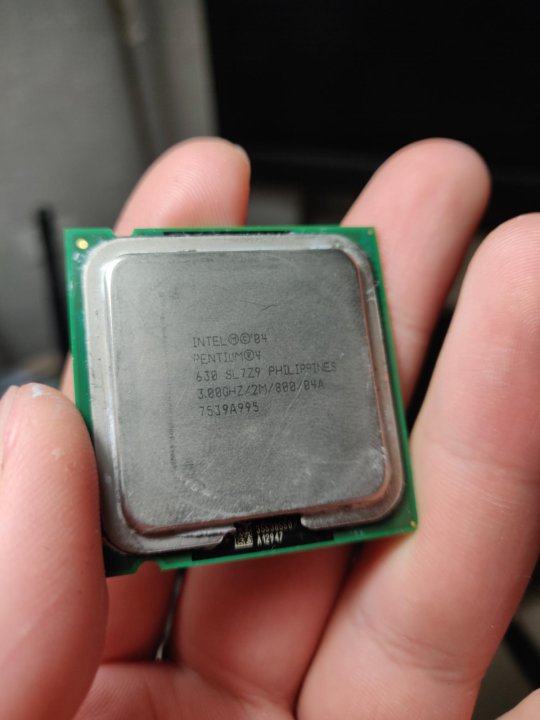
I have to assume the role of Spock here when buying a Pentium over an Athlon for any reason whatsoever. I just don’t see the LOGIC in it.
If you wanted a fast car (not that I know anything about cars) why would you buy a 350 horse power car for a higher price than a 450 horse power car that costs LESS? (I know crap about cars so keep that in mind— but I do know it wouldn’t make sense).
Also keep in mind that just because you had a problem with an AMD processor in the past it doesn’t mean it was AMD’s fault. That is hardly ever the case. It is usually because of an outdated BIOS, or other hardware problem other than your processor.
Pentiums are like the guy that is almost a genius that has to work really really hard to get the grades that the genius gets by not even studying. Who would you hire for a job first? The genius that works fast or the almost genius that gets basically the same job done but slower????
Nic
Posts: 1,519 +1
-
-
#21
The latest Athlons run cooler than Pentiums, so they don’t require better cooling solutions any more.
Also, remember the pentium floating-point bug? Compatability isn’t an issue with AMD any more (Microsoft approved) and the choice really comes down to personal preference (mainly — if we ignore cost etc.).
With nForce chip sets, the Athlon has one of the best performing and stable platforms on the market, and by supporting AMD, competition in the cpu market is maintained to everyone’s benefit.
I still remember when an Intel 486DX2-66 CPU cost me £400 ($600) and prices only started to fall when AMD cpu’s were selling well and taking market share from Intel. If AMD didn’t exist (and they are still not making a profit) then we’d all be paying the best part of £1000+ ($1500) for our CPUs, and no one wants that now, do they?
teleport
Posts: 6 +0
-
-
#22
I’m currently looking to upgrade to a bew CPU/mobo and what’s really confusing me is this FSB business.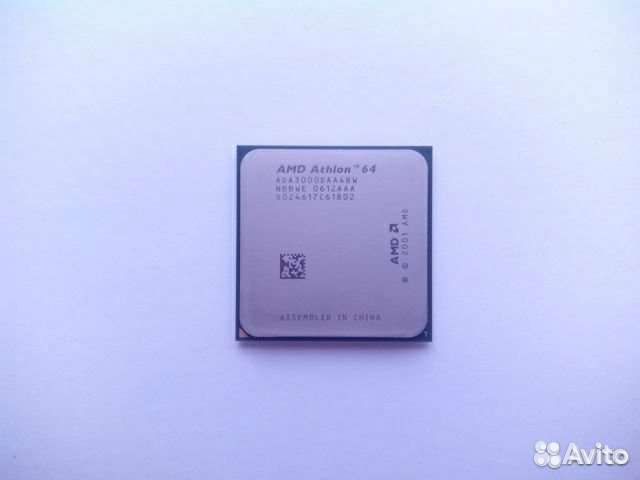
Surely the Intel 533 FSB is much much faster than the Athlon 266/300FSB?
Can someone Techy please explain why it’s not.
eddy05
Posts: 147 +0
-
-
#23
I’m not techy, but i’ll explain
The speed of the Front Side Bus (FSB) determines how much data can be passed to the CPU (And your system). It does not represent the speed of how fast a CPU work. A huge FSB is generally better for processes where alot of data needs to travel to and fro the CPU eg. Media Encoding.
If you want to select a CPU/mobo combination I suggest you search for benchmarks for the CPUs’ practical performaces since you shouldn’t really compare CPUs by their clockspeeds.
teleport
Posts: 6 +0
-
-
#24
Thanks for the reply Eddy. I’ll look at the benchmarks.
The one thing that is putting me off AMD is the VIA chipsets. VIA seem to rush out buggy chipsets, let you buy them then bring out fixed revisionA’s later. I got a bit screwed with the KT133 and am currently looking towards pentium CPUs for this very reason.
eddy05
Posts: 147 +0
-
-
#25
It’s perhaps a gd and bad reason.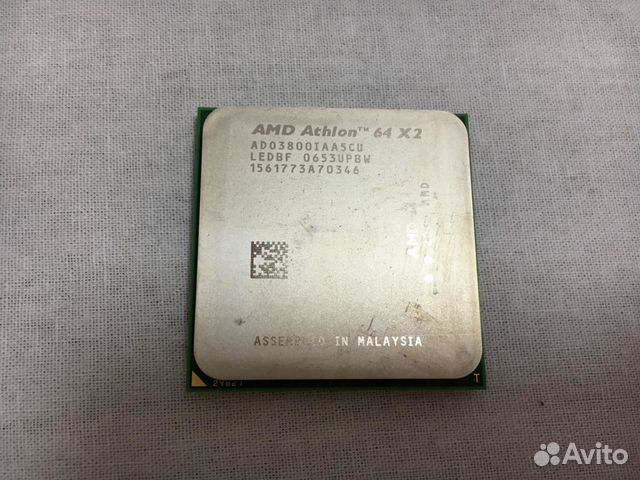
I chose AMD because of a similar reason like yours, only with Intel. Lessons will tell you that first released products are usually buggy. I’m using a KT400 now and it’s working alright, although the KT400A’s already out and better than mine. Still, I find mine running at an acceptable pace.
Pentium4 vs. AMD AthlonXP
https://www.pugetsystems.com
- Home
- View All Articles
- Pentium4 vs. AMD AthlonXP
Read this article at https://www.pugetsystems.com/guides/1
Written on December 10, 2001 by Jon Bach
Share:
Always look at the date when you read a hardware article. Some of the content in this article is most likely out of date, as it was written on December 10, 2001. For newer information, see our more recent articles.
Marketing Support
The sweetest thing about their position is that they have a lot of help.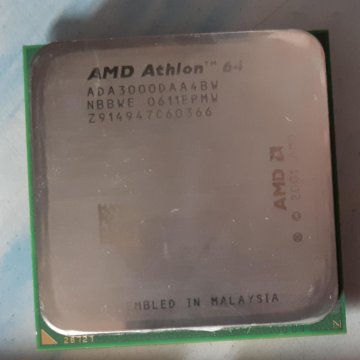 With the market share so large, Intel receives large support from all of the major computer manufacturers. Gateway, Dell, Compaq…they all are heavy on the Intel market. This is not surprising! When 80% of their customers come looking for an Intel-based computer, it is in their best interest to comply! Not only that, but it is in their interest to help push Intel sales. So now we have every main manufacturer putting out advertising for Intel. «Intel Pentium4 inside» is a slogan that has caught on with the consumers.
With the market share so large, Intel receives large support from all of the major computer manufacturers. Gateway, Dell, Compaq…they all are heavy on the Intel market. This is not surprising! When 80% of their customers come looking for an Intel-based computer, it is in their best interest to comply! Not only that, but it is in their interest to help push Intel sales. So now we have every main manufacturer putting out advertising for Intel. «Intel Pentium4 inside» is a slogan that has caught on with the consumers.
Common Setup Characteristics
When we look at the computers from the major manufacturers, we see one striking trend. The processor is the best part of the whole system. Not only that, but the processor is sometimes the only part of the system of any value! In that single characteristic, we can draw a very important insight — the large manufacturers do not care about quality systems or optimal arrangements. They care about making sales. They know that to the average consumer, «Intel Pentium4 inside» is the only slogan they know. When they are looking for a computer, the only requirement is that it has a Pentium4 processor. That is why the rest of the system can be poor quality — the processor is the only thing making the sale. So why aren’t they using AMD processors? The same reason. Why attempt to change the minds of your customers when you can make a quicker sale by giving them exactly what they want!? And there lies the perpetual nature of Intel’s marketing. By retaining a large market share, manufacturers are happy to go along for the ride and get a piece of that market!
When they are looking for a computer, the only requirement is that it has a Pentium4 processor. That is why the rest of the system can be poor quality — the processor is the only thing making the sale. So why aren’t they using AMD processors? The same reason. Why attempt to change the minds of your customers when you can make a quicker sale by giving them exactly what they want!? And there lies the perpetual nature of Intel’s marketing. By retaining a large market share, manufacturers are happy to go along for the ride and get a piece of that market!
Making Up Lost Ground
Under the conditions outlined so far, it seems nearly impossible for any secondary manufacturer to make any gain in the market. It is very impressive that AMD is doing just that. They aren’t doing it with clever marketing techniques or manufacturer contracts. Their strength is simple — build faster processors, and sell them cheaper. It is working. Over the last few years, AMD has made amazing gains, and is placed very well in the market. The graph below is certainly out of date, but it clearly shows the growth of AMD.
A New Battlefront
In fact, these strengths of the AMD processor line have been recognized for years by the technologically inclined few. As more and more people become convinced that AMD may be a better value than Intel, we are seeing a crucial change in the ongoing battle. Since the large computer manufacturers can do nothing but follow public opinion, you are now seeing Dell and Gateway with a full line of AMD systems. This is quite a blow to Intel. What will they do now that their delicate market position is being shaken? We are already starting to see the answer, as their newest marketing efforts are focused on high end audio and video editing. I believe this to be a very good move for Intel, because it puts them into a market that they should have been in all along!
Intels Real Strengths
Pentium4 has two major advantages over AMD: they are more stable and they are capable of a much higher utilization of system memory. Stability is definitely a quality that they should be pushing, but have simply chosen not too. Their memory bandwidth is what they are focusing on now. This capability is why Pentium4 systems are most often paired with RDRAM. RDRAM is capable of enormous bandwidth, allowing large amounts of data to be quickly transferred from the CPU to the system memory. This configuration allows CPU and ram intensive tasks to run very quickly, which means that a Pentium4 system is a great choice for high-end video editing.
The Strengths of AMD
Not everyone does high end video editing, and of those who do, not everyone has the extra $1500 to spend on a Pentium4 system. AMD is there as their alternative. As I have always said, AMD’s main strength is in their great prices. It has been said that AMD’s prices are so low that it arouses suspicion regarding their quality. How can something so cheap be just as good? This is an amusing problem, though a real one. TomsHardware.com has been running comparison tests between the two processor lines for as long as they have been around, and the latest round of tests revealed some interesting results. The Athlon XP 1800+ processor simply blew away a Pentium4 2GHz processor in video editing! So, once again, Pentium4’s position is being rocked, and it will be interesting to see what happens as time goes on.
Straight Comparison Impossible
For years, AMD has been suffering from a direct comparison of CPU clock cycle speeds. For example, when you have a 1.4Ghz Pentium4 processor and a 1.4Ghz AMD processor, it is natural to assume that they are essentially the same speed. This is bad for AMD, because at the same clock speed, an AMD processor is actually faster. This is due to the architecture of their design — during each clock cycle, and AMD processor performs more operations. An AMD processor, then, is always faster than it sounds to the average consumer. This introduces a great deal of confusion to most people. How can anyone know which processor is faster without pouring over the benchmarks and testing data? AMD has been slow to address this problem, but they have now taken the first steps.
New Performance Based Speed Ratings
AMD finds its solution in a new ‘performance based’ rating system. This is a shaky concept, but was a good move by AMD. What it means is that they will no longer label their processors according to their clock speed, but will create names that appeal to public perception to attempt to accurately describe the processor speed. For example, the Athlon XP series has a processor that runs at 1.5GHz, and they have named the processor the 1800+. You can see what they’re doing. They know that their 1.5GHz processor is the equivalent to a 1.8GHz Pentium4, so they have given it that label (although it is interesting to note that the 1800+ AMD blew away the Pentium4 2.0GHz processor in video editing, which simply means that AMD is being careful to be very conservative in their labeling). This new system has the potential to throw the whole CPU scene into confusion, but at this time, it is the only way that AMD can get the speed recognition that it deserves.
| AMD Speed Rating | Clock Frequency |
| 1600+ | 1.40GHz |
| 1700+ | 1.47GHz |
| 1800+ | 1.53GHz |
| 1900+ | 1.60GHz |
| 2000+ | 1.67GHz |
| 2100+ | 1.73GHz |
Conclusion
With the good moves AMD is making in the market, it looks as if they are going to continue to gain strength with the large manufacturers. Puget Custom Computers is simply a little bit ahead of its competitors. This is not due to anything special about Puget Custom Computers — it is inherent in its nature. While the large manufacturers are forced to closely follow consumer opinion, Puget Custom Computers can work with each and every client to examine each situation to determine whether AMD may be a better choice, and thus is not as closely bound to consumer opinion. After all, as the slogan goes: In a market that is out there to take your money by telling you exactly what you want to hear, Puget Custom Computers is breaking the trend by making computer systems that do not conform to your presuppositions, but your needs!
Please enable JavaScript to view the comments powered by Disqus.
battle of two knights with the participation of squires
Not so long ago we published a rather detailed review of one of the «extreme» desktop processors a new fashion, which went crazy with both leading x86 CPU manufacturers at once. However, the authorship of the idea still seems to belong to AMD although Intel managed to «pick up» it so quickly that they officially released their Pentium 4 Extreme Edition earlier. What kind of processors are these? The attitude of the manufacturers themselves towards them is surprisingly unanimous: as AMD says that its brainchild “ the only representative in its class designed specifically to support Cinematic computing technology”, providing “ the most powerful technology for immersive games and engaging multimedia entertainment» and Intel candidly writes that «this processor delivers realistic physics simulations and artificial intelligence, giving gamers and the most demanding users an exceptional experience. » In a word almost like a «processor for toys».
True, the attitude to the expected success of these processors, apparently, is somewhat different: if Intel almost frankly admits that the success of the Pentium 4 EE (or «XE»? However, what’s the difference anyway, the processor does not have an official abbreviated ) she doesn’t particularly care that it will never become mass-produced and will not go into large circulation then AMD, on the contrary, reacted to the idea of an “extreme desktop processor” with enthusiasm and is actively pushing it to the masses. Looking ahead a little, we can say that later we will see what factual reasons may underlie such an attitude of both companies towards their products. However, let’s take a closer look at the processors themselves. What’s this? A new word in processor building? Special «extreme» developments? Or is it much easier? To begin with, let’s see what processor lines are currently in the assortment of both companies, and what are the characteristics of these processors.
9ATH
Pentium 4 Extreme Edition
Quite an ordinary Pentium 4
In fact, the P4 EE is just a Xeon MP ported to another (desktop) socket (Socket 603 > Socket 478). Well, «little things»: a bus from a modern Pentium 4 (800 MHz), a higher frequency, the inability to work in multiprocessor systems. However, is it the absence? There is no place to check anyway there are no multiprocessor boards with Socket 478! So Intel could not even physically disable support for SMP anyway, the chances of getting a dual P4 EE are zero, and it is unlikely that any of the manufacturers will dare to release such a board. In addition, P4 EE can work with regular (not registered, without ECC) DDR400 SDRAM, but there is also one “subtle nuance” here Xeon MP can also work with it (actually, this is not AMD K8, Intel processors characteristics and even types of memory are completely indifferent). Another thing is that for Xeon MP, again, there are no corresponding boards (pay attention to the requirements for modules in the above example). And P4 EE is easily installed on desktop motherboards , respectively, and the most ordinary memory is enough for it. To sum up: Pentium 4 Extreme Edition is a Xeon MP die soldered to another socket.
They “touched” at least something in this crystal or simply left it as it is it is not possible to find out, but it is quite likely that they did not touch it. Outwardly, the differences between it and the usual Pentium 4 are minimal — only the markings and the rear side.
On the left regular Pentium 4, on the right Pentium 4 Extreme Edition
Athlon 64 FX
Well, our second hero is an even simpler processor, since, judging by the characteristics, this is most likely just a relabeled Opteron 100th series. The core frequency is 200 MHz higher and support for the registered DDR400 instead of DDR333 can, in general, be achieved by carefully selecting Opteron 146 instances for the ability to work stably at a slightly higher core frequency, but we already wrote about support for Opteron DDR400 processors. And it is precisely in the simplicity of the appearance of the Athlon 64 FX that its main drawback lies. Because the Pentium 4 Extreme Edition is, after all, an “honest” desktop processor in all respects: it is installed on desktop motherboards, it works (through these same boards) with the usual DDR400 (PC3200), which, as they say, are full in any computer store counters. But is a relabeled Opteron 146 from AMD this is the Opteron after all. And it has a server socket (a corresponding board is also needed), and register memory is required. And getting a registered DDR400 now is, you know, a rather non-trivial task. At least, even for us, it turned out to be so. Well, the biggest disadvantage of the Athlon 64 FX, from a consumer point of view, is the main consequence of all of the above: upgrading a system from a regular Athlon 64 to an Athlon 64 FX without replacing the board and memory is impossible . While a pair of Pentium 4 with 800 MHz FSB and Pentium 4 Extreme Edition allows such an operation.
In this connection, preliminary estimates of two «extreme» processors from Intel and AMD will be as follows: Pentium 4 Extreme Edition five points («honest» desktop processor in all respects, no matter what it has inside), Athlon 64 FX three points (“we should be more careful”, as Zhvanetsky said: limit ourselves to simple re-marking, without thinking about other characteristics of the “newborn”, this is somehow undignified). However, “without thinking” is, of course, a metaphor. They probably thought something, but it just didn’t work out otherwise: the desktop Socket 754, standard for the AMD64 architecture, does not provide for the possibility of installing a processor with a dual-channel memory controller in it. Which, however, does not justify AMD in the least earlier it was necessary to take into account the possibility of such incidents. However, preliminary estimates they are preliminary; this is not even an assessment, but so first impressions. The main ones may not appear until the speed of new processors becomes known. And therefore let’s finish the “circa-marketing chatter” (along with the near-technical) and move on to the tests.
| ABIT IC7-MAX3 | AGP Pro/ 6 PCI | ||||||||||||||||||||||||||||||||||||||||||||||||||||||||||||||||||||||||||||||||||||||||||||||||||||||||||||||||||||||||||||||||||||||||||||||||||||||||||||||||||||||||||||||||||||||||||||||||||||||||||||||||||||||||||||||||||||||||||||||||||||||||||||||||||||||||||||||||||||||||||||||||||||||||||||||||||||||||||||||||||||||||||||||||||||||||||||||||||||||||||||||||||||||||||||||||||||||||||||||||||||||||||||||||||||||||||||||||||||||||||||||||||||||||||
|---|---|---|---|---|---|---|---|---|---|---|---|---|---|---|---|---|---|---|---|---|---|---|---|---|---|---|---|---|---|---|---|---|---|---|---|---|---|---|---|---|---|---|---|---|---|---|---|---|---|---|---|---|---|---|---|---|---|---|---|---|---|---|---|---|---|---|---|---|---|---|---|---|---|---|---|---|---|---|---|---|---|---|---|---|---|---|---|---|---|---|---|---|---|---|---|---|---|---|---|---|---|---|---|---|---|---|---|---|---|---|---|---|---|---|---|---|---|---|---|---|---|---|---|---|---|---|---|---|---|---|---|---|---|---|---|---|---|---|---|---|---|---|---|---|---|---|---|---|---|---|---|---|---|---|---|---|---|---|---|---|---|---|---|---|---|---|---|---|---|---|---|---|---|---|---|---|---|---|---|---|---|---|---|---|---|---|---|---|---|---|---|---|---|---|---|---|---|---|---|---|---|---|---|---|---|---|---|---|---|---|---|---|---|---|---|---|---|---|---|---|---|---|---|---|---|---|---|---|---|---|---|---|---|---|---|---|---|---|---|---|---|---|---|---|---|---|---|---|---|---|---|---|---|---|---|---|---|---|---|---|---|---|---|---|---|---|---|---|---|---|---|---|---|---|---|---|---|---|---|---|---|---|---|---|---|---|---|---|---|---|---|---|---|---|---|---|---|---|---|---|---|---|---|---|---|---|---|---|---|---|---|---|---|---|---|---|---|---|---|---|---|---|---|---|---|---|---|---|---|---|---|---|---|---|---|---|---|---|---|---|---|---|---|---|---|---|---|---|---|---|---|---|---|---|---|---|---|---|---|---|---|---|---|---|---|---|---|---|---|---|---|---|---|---|---|---|---|---|---|---|---|---|---|---|---|---|---|---|---|---|---|---|---|---|---|---|---|---|---|---|---|---|---|---|---|---|---|---|---|---|---|---|---|---|---|---|---|---|---|---|---|---|---|---|---|---|---|---|---|---|---|---|---|---|---|---|---|---|---|---|---|---|---|---|---|---|---|---|---|---|---|---|---|---|---|---|---|---|---|
| I/O Ports | 1 FDD, 2 PS/2 | 1 FDD, 1 LPT, 2 COM, 2 PS/2 | 1 LPT, 2 COM, 2 PS/2 | ||||||||||||||||||||||||||||||||||||||||||||||||||||||||||||||||||||||||||||||||||||||||||||||||||||||||||||||||||||||||||||||||||||||||||||||||||||||||||||||||||||||||||||||||||||||||||||||||||||||||||||||||||||||||||||||||||||||||||||||||||||||||||||||||||||||||||||||||||||||||||||||||||||||||||||||||||||||||||||||||||||||||||||||||||||||||||||||||||||||||||||||||||||||||||||||||||||||||||||||||||||||||||||||||||||||||||||||||||||||||||||||||||||||||
| USB | 4 USB 2. |
2 USB 2.0 + 2 x 2 USB 2.0 | 4 USB 2.0 + 1 x 2.0 | ||||||||||||||||||||||||||||||||||||||||||||||||||||||||||||||||||||||||||||||||||||||||||||||||||||||||||||||||||||||||||||||||||||||||||||||||||||||||||||||||||||||||||||||||||||||||||||||||||||||||||||||||||||||||||||||||||||||||||||||||||||||||||||||||||||||||||||||||||||||||||||||||||||||||||||||||||||||||||||||||||||||||||||||||||||||||||||||||||||||||||||||||||||||||||||||||||||||||||||||||||||||||||||||||||||||||||||||||||||||||||||||||||||||||
| FireWire | 1 port + 2 connectors for 2 ports (Texas Instruments TSB43AB23) | 2 connectors for 3 ports GigaWare (FireWire-800, IEEE 13 to processors, not chipsets or platforms in general. However, we still provide a few diagrams as a reference material that helps to better understand the results of other tests these are the indicators taken using two (for safety net) synthetic benchmarks: Cachemem and CacheBurst32. In principle, we don’t see anything extraordinary on the diagrams: in terms of memory read speed (Cachemem, CacheBurst32 Memory Peak Bandwidth), all processors except for the “channelless” Athlon 64 3200+ demonstrate approximate equality (thus, it turns out that Athlon 64 The FX-51 is no «cooler» than a regular Pentium 4).
But in terms of recording speed, the places were distributed differently: «extremals» from both companies are on an equal footing, but the «simple» Pentium 4 no longer joins them, noticeably lagging behind. 3ds max 5.1 It is easy to see that the ratio between the performance of «older» and «younger» in each pair is very different: Pentium 4 EE received little from the addition of a two-megabyte third-level cache (only 2% gain), while The Athlon 64 FX-51 outperforms the regular Athlon 64 3200+ by a significant amount, about 10%. Lightwave 7.5 No, AMD processors positively dislike renderers. So Lightwave (still significantly inferior in prevalence to the same 3ds max, for which it was taken as an alternative) again brings the Intel platform forward. Yes, both Pentium 4s clearly see an increase from using it, and what a 18% for both the regular P4 and the «extreme» one! It’s easy to see that if it weren’t for «virtual multiprocessing», then we could talk about approximately equal performance of at least the Athlon 64 FX and both Pentium 4s, but when it is enabled, both P4s fall far behind. Is it deep?. Adobe Photoshop 7.0 But when working with raster graphics, the Athlon 64 FX-51 paid off in full for rendering. What is interesting the situation is very similar to 3ds max, only with different «starting conditions». Please note: the regular Athlon 64 3200+ and Pentium 4 3.2 GHz are practically equal in this test, the difference is negligible. But as soon as we move on to «extreme options» the situation immediately changes dramatically. Pentium 4 Extreme Edition is not at all faster than the «youngest» faster, and even quite tangible 10%. Frequency? Probably, and she, too, but still a big role, as it seems to us, was played by a dual-channel memory controller. After all, the increase in performance with an increase in the frequency of cannot in any way be greater than the increase in the itself about the th frequency of (at least in the x86 architecture), and the difference between 2200 and 2000 MHz is only 10% far from 22% Played quite well this round and the Athlon 64 3200+ can be considered on a par with the regular Pentium 4 (even a little faster, but less than 1% difference is absorbed by the possible error). Conclusions? Hmm Looks like those who spend most of their time working in Photoshop might start looking at an alternative platform
7-ZipA specific archiver, but the only one known to us that supports multiprocessor systems due to the “multi-threaded” organization of the compression process. This theoretically can give an advantage to the Pentium 4 in all its aspects through the use of Hyper-Threading. Looking at the chart well, it looks like our expectations were justified both systems based on Intel processors performed very well. However, the performance gain of the «older» in relation to the «younger» is still (we can already say «traditionally») more pronounced in the AMD camp: the Athlon 64 FX-51 outperforms the Athlon 64 3200+ by as much as 20%, while the Pentium 4 EE for a regular only 6%. However, let’s now look at the more traditional WinRAR, which does not support multithread archiving WinRAR And once again, let’s pay your attention to how often different «starting conditions» lead to different final results with the same trends. Bzip2A fun «why not?» option. We stopped using the usual WinZIP and “variations on a theme” a long time ago the performance of these programs at the speed of the current CPU depends more on the disk subsystem, that is, its read / write speed, than on the processor or memory. However, the cross-platform Bzip2 «presses» quite well and, they say, enjoys a certain popularity among Linux fans well, we are «not strained.» 🙂 The result leaves an ambiguous impression: after all, the number of disk operations on a 300 MB set of files is too high in terms of time, so the influence of the disk subsystem, most likely, could not be completely avoided. Lame 3.93 Audio encoding turned out to be the most «calm» test. You look at the diagram with the results and immediately think: maybe, well, to hell with this processor race? The difference is minimal, the trends are hardly distinguishable and hmm a little strange (as much as 2 megabytes of L3 cache did not give the Pentium 4 EE nothing at all !). Return to Castle WolfensteinHowever, «the music didn’t last long». For ahead of us games! And although we still haven’t managed to imagine a person who will spend an amount of about $ 900 for the processor alone, so that later we can use our computer as a game console, but we can’t refuse game tests either, because “you can’t forget about the people”, and for some reason they stubbornly believe that an article without tests in Quake can only justify the presence of something similar, «and more, more!». Otherwise, it’s not even testing, but it’s not clear what at all So what are we talking about?.. Oh yes, games. Tests at various resolutions in Return to Castle Wolfenstein show us that the closer we get to the modes that are worth playing on a powerful machine, the less dependent on the processor, once again proving but, it seems, about we have already said this. Serious Sam: The Second Encounter But in this case, the situation is radically different from the previous one. For here we can already speak about the “processor preferences” of the game engine quite unambiguously, and without any jokes. Serious Sam traditionally «loves» AMD, and in the case of «extreme» processors, this love is not only not smoothed out, but even becomes more pronounced. In general, the difference of even 7 fps at 1280×1024 resolution with 32-bit color and maximum image quality settings is, I must say, an event. Let’s try to understand why this happens, and for this we will take, of course, almost «synthetic», but at the same time the most significant results at a resolution of 800×600 pixels. Unreal Tournament 2003 And again, the same “Expendable syndrome”! No, positively, only Id Software can write the «smooth» code so beloved by Intel’s flagship processors. Maybe they use other compilers? However, the fact remains: if we analyze the results of gaming tests from the point of view of «processor preferences of the engines», then AMD is again in favor.
Conclusions Given the number of compared processors, we decided to divide the conclusions into several parts, within each of which the most probable antagonists are discussed in pairs. It seemed logical to us because most often people do not choose “one of four” (five, six), but first reduce the number of candidates to a more familiar pair and consider it most closely. At the same time, it seemed appropriate to us for clarity to present the results of all the tests considered above once again, but in a different form in the form of a single diagram, where all the tests are presented at once, but only the two competitors under consideration are left, and the performance of one of them (the loser within the given pair ) is taken as 100%. You can consider this way of «secondary presentation of results» as a kind of experiment if it takes root, then it will be possible to introduce it into use as a standard supplement to conclusions. Pentium 4 Extreme Edition as an alternative to the usual Pentium 4 Only 8.5%, and if you look at the one who made the main contribution to this figure (Bzip2 archiver) It becomes a little sad. In general, the impressions from the Pentium 4 Extreme Edition were somehow blurred, and they were “blurred” not so much even by its performance as by expectations from them. Still, as much as 2 MB of L3 cache, and No, it’s not that it’s bad everywhere, not that there’s absolutely no advantage over the usual Pentium 4 3.2 GHz! But somehow it is all too vague, we definitely expected more. It turns out that the positioning of this processor itself is about the th Intel turned out to be, we would say, «depressingly true» it really is something like the recently discontinued «600th Mercedes», which is intended to be, rather, not a sign of the owner’s passion for good cars, but a symbol of his prosperity. Previously, there was the famous Zadornov’s “porsche on aspen”, now something else has been added like “and I’m cutting myself on the P4 EE!”. Athlon 64 FX-51 as an alternative to Athlon 64 3200+ We have already said that the title of «Extreme Performance Edition» is more deserving of Athlon 64 FX-51 than P4 EE, and the diagram once again confirms this. And the point is not even in the general indicator of the average performance increase in relation to a conventional desktop processor (although this indicator is higher for the A64 FX), but in the fact that the performance of the Athlon 64 FX-51 always outperforms the Athlon 64 3200+, and not by «flashes» like the P4 EE of its «partner». Athlon 64 3200+ as an alternative to Pentium 4 3.2 GHz Loss by 6% is, in general, not a failure, but simply a «loss on points», so it’s quite appropriate to talk about the real existence of an alternative. Let’s take a closer look at the most significant losses of Athlon 64 3200+. These are both «renderers» 3ds max and Lightwave, and the 7-Zip archiver. Doesn’t such a set cause any associations? That’s right: all these are programs that can use the resources of multiprocessor (or «virtual multiprocessor») systems, that is, it is quite legitimate to assume that Pentium 4 won precisely due to Hyper-Threading support. It’s easy to see this scroll up to the chart with Lightwave results and compare the performance of processors for one and eight threads. It is easy to see that in the case of a single thread, the lag of Athlon 64 3200+ becomes much smaller, although it does not disappear completely. Therefore, no matter what AMD says, but the facts are a stubborn thing: “multiprocessor emulation”, , at least for a processor like the Pentium 4 , turned out to be extremely useful. Athlon 64 FX-51 as an alternative to the Pentium 4 Extreme Edition 3.2 GHz, or simply “AMD vs. Intel» 🙂 Why «AMD vs. Intel”, it’s easy to understand: after all, in this section we are pitting our heads against the two most powerful desktop processors from two “sworn friends”. We collide and see that nothing happened. Why not call the gain of Pentium 4 Extreme Edition by 1.3% a victory?! No, we will not call it a victory. Even «winning on points». Moreover, individual tests have agreed: exactly in half of them the P4 EE wins, and in the second half the A64 FX leads. Therefore, we just have to once again smile and state equality. Why smile? Yes, because again the battle of the giants ended in a fighting draw, despite the terrible amount of fanatical battles between fans of both manufacturers. And even the “micron” gain of the Intel platform has already become almost a traditional attribute. Architectures change, all kinds of hyperthreading and 64-bit instructions are introduced, but the essence has remained the same for four years in a row: significant performance advantages over a long period of time cannot be achieved by any of the competitors. Athlon 64 FX-51 as an alternative to Pentium 4 3.2 GHz? Well, it overtakes, overtakes, calm down :). Even in an additional diagram, in general, there is no particular need. In fact, it would be strange if this did not happen what was the point for AMD in releasing the Athlon 64 FX then? One can even cautiously assume that this is exactly how this decision was made: on the basis of internal testing on the subject of “overtake or not overtake?”. overtook. However, we have already written about the cost: de facto server (well, or, at least, workstation-) boards, the use of a registered DDR400, which you won’t find in the daytime In a word, sincerely rejoicing for once at a rather convincing victory for AMD, we still have to state that the victory turned out to be somewhat « podium.» And apparently, they were somewhat not above those who were supposed to be defeated initially they were going to overtake the competitor’s fastest desktop processor, but the competitor unexpectedly responded with the release of an equally “far-fetched” version that “spoiled all the raspberries”. If we try to predict the future, then it seems to us that both «monsters», in the end, will remain monsters in the minds of ordinary users. They (or systems based on them) will be purchased either for reasons that are rather weakly related to practical use (fanatical devotion to a certain brand, prestige), or vice versa clearly knowing which applications are executed on the corresponding CPU the fastest, that is, choosing a computer strictly for the task. Other users will be completely satisfied with the usual Pentium 4 or Athlon 64 — fortunately, there is something to compare there too, and everything is not so unambiguous as to be able to talk about absolute leadership. On this pragmatic-optimistic note, perhaps, we will end. The performance of 4 cores, if any, and performance per core has the greatest impact on the result, since most games do not fully use more than 4 cores. The speed of caches and working with RAM is also important. Speed in office useAthlon 64 4000+ 32. Pentium 4 3.00GHz 28.1 Performance in everyday work such as browsers and office programs. The performance of 1 core has the greatest impact on the result, since most of these applications use only one, ignoring the rest. Similarly, many professional applications such as various CADs ignore multi-threaded performance. Speed in heavy applicationsAthlon 64 4000+ 14.3 (+11.9%) Pentium 4 3.00GHz 12.6 The performance of all cores and their number have the greatest impact on the result, since most of these applications willingly use all the cores and increase the speed accordingly. At the same time, certain periods of work can be demanding on the performance of one or two cores, for example, applying filters in the editor. Data obtained from tests by users who tested their systems with and without overclocking. Thus, you see the average values corresponding to the processor. Speed of numerical operations
Different tasks require different CPU strengths. A system with few fast cores and low memory latency will be fine for the vast majority of games, but will be inferior to a system with a lot of slow cores in a rendering scenario. We believe that a minimum of 4/4 (4 physical cores and 4 threads) processor is suitable for a budget gaming PC. At the same time, some games can load it at 100%, slow down and freeze, and performing any tasks in the background will lead to a drop in FPS. Ideally, the budget shopper should aim for a minimum of 4/8 and 6/6. A gamer with a big budget can choose between 6/12, 8/8 and 8/16. Processors with 10 and 12 cores can perform well in games with high frequency and fast memory, but are overkill for such tasks. Also, buying for the future is a dubious undertaking, since in a few years many slow cores may not provide sufficient gaming performance. When choosing a processor to work with, consider how many cores your programs use. For example, photo and video editors can use 1-2 cores when working with filtering, and rendering or converting in the same editors already uses all threads. Data obtained from tests of users who tested their systems both with overclocking (maximum value in the table) and without (minimum). BenchmarksBenchmarks were run on stock hardware, that is, without overclocking and with factory settings. Therefore, on overclocked systems, the points can noticeably differ upwards. Also, small performance changes may be due to the BIOS version. PassmarkAMD Athlon 64 4000+ 321 (+ 3.4%) Intel Pentium 4 3.00GHZ 310 Characteristics. Data are not yet filled, therefore, there may not be enough information or existing functions. .Basic
Video core
RAM
PCI
Data Protection
Design
Which is betterAMD Athlon 64 4000+
Intel Pentium 4 3.00GHz
How they are similar
| |||||||||||||||||||||||||||||||||||||||||||||||||||||||||||||||||||||||||||||||||||||||||||||||||||||||||||||||||||||||||||||||||||||||||||||||||||||||||||||||||||||||||||||||||||||||||||||||||||||||||||||||||||||||||||||||||||||||||||||||||||||||||||||||||||||||||||||||||||||||||||||||||||||||||||||||||||||||||||||||||||||||||||||||||||||||||||||||||||||||||||||||||||||||||||||||||||||||||||||||||||||||||||||||||||||||||||||||||||||||||||||||||||||||||
